Can bacteria weave? Can architecture become soft? Can humans learn from caterpillars how to develop a more sustainable construction? And how do material processes build communities? In our research we challenge the common understanding of weaving, as we focus on bacterial cellulose , West-African wild silk cocoons and the use of yarn in architecture. We address relationships of two- or three-dimensional longitudinal elements interconnected by entanglement, interlacing, braiding or classical weaving. Such fiber-based matter can be the product of natural or cultural processes and occur ubiquitously from the nano-scale in biological systems to the macro-scale in architectural contexts. By doing experiments on biological fiber-based matrices and tissues, by upscaling microscopic structures into architectural prototypes and by historical and theoretical investigations, we are redefining woven structures as a material practice running through nature and culture.
General Concepts in WEAVING
Human endeavours dealing with materials should consider concepts of sustainability. Environmentally harmful practices are tightly linked to our modern non-circular economies that convert natural ‘resources’ into ‘waste’. They reflect the patriarchal, colonial and capitalist, i.e., essentially exploitative perspectives on our world. Instead, we intend to develop practices of cooperation between species (humans-animals-plants-microbes) and recognize and use the inherent activity of matter in natural environments. We aim to replace anthropocentrism by respect, understanding and care for human and non-human actors. This requires the conscious re-integration of our practices into natural ecosystems.
In Weaving we start with the reconsideration of concepts of structure and boundary which are essential in scientific and social science descriptions of living entities and their inter- and intraspecies as well as environmental relationships. As basic units, we focus on longitudinal elements such as fibers that assemble by entanglement, interlacing, braiding or classical weaving. Such two- or three-dimensional structures create (semi)permeable boundaries that allow a controlled exchange of matter, energy and information. This boundary-based controlled exchange leads to the emergence of homeostasis and a protected internal space as a defining hallmark of life. Navigating across the scales of matter and life, we are studying bacterial communities (biofilms), social insect silk cocoons and human dwellings, which all are transient boundary constructions that function as environmental techniques insofar as they create an individual environment for the community which is essential for survival. Central to our project is Tim Ingold´s theoretical concept of weaving as a paradigmatic practice of engaging with materials and thereby making environments that are continuously in the state of becoming. On the practical side, common geometrical, physical and biochemical principles of intrinsic activity and of the use of entangled fibrous matter at all scales are identified that allow to generate form and function both in nature and human culture.
Left: E. coli biofilm cross-section showing the internal fibrous matrix architecture. Copyright: Regine Hengge; Middle: Communal nest of wild silk cocoons of Anaphe/Epanaphe (West-Africa). Private Collection of Laurence Douny. Photo taken at the exhibition DAOULA | sheen. »West-African Wild Silk On Its Way« (at Tieranatomisches Theater in Berlin, 18 November 2022 to 30 June 2023) by Regine Hengge; Right: Michael Beutler: Shipyard, 57th International Art Exhibition: Biennale Arte 2017, Venice. Image: Karin Krauthausen

Exhibition Opening DAOULA | sheen, 17.11.2022, Tieranatomisches Theater Berlin. Copyright: Matters of Activity

Cover »Modell Hütte«. Copyright: diaphanes Verlag

MoA Project »Bacterial Cellulose: Co-Weaving Biofilms« at the Milano Triennale 2022. Copyright: Triennale Milano – photo by DSL Studio
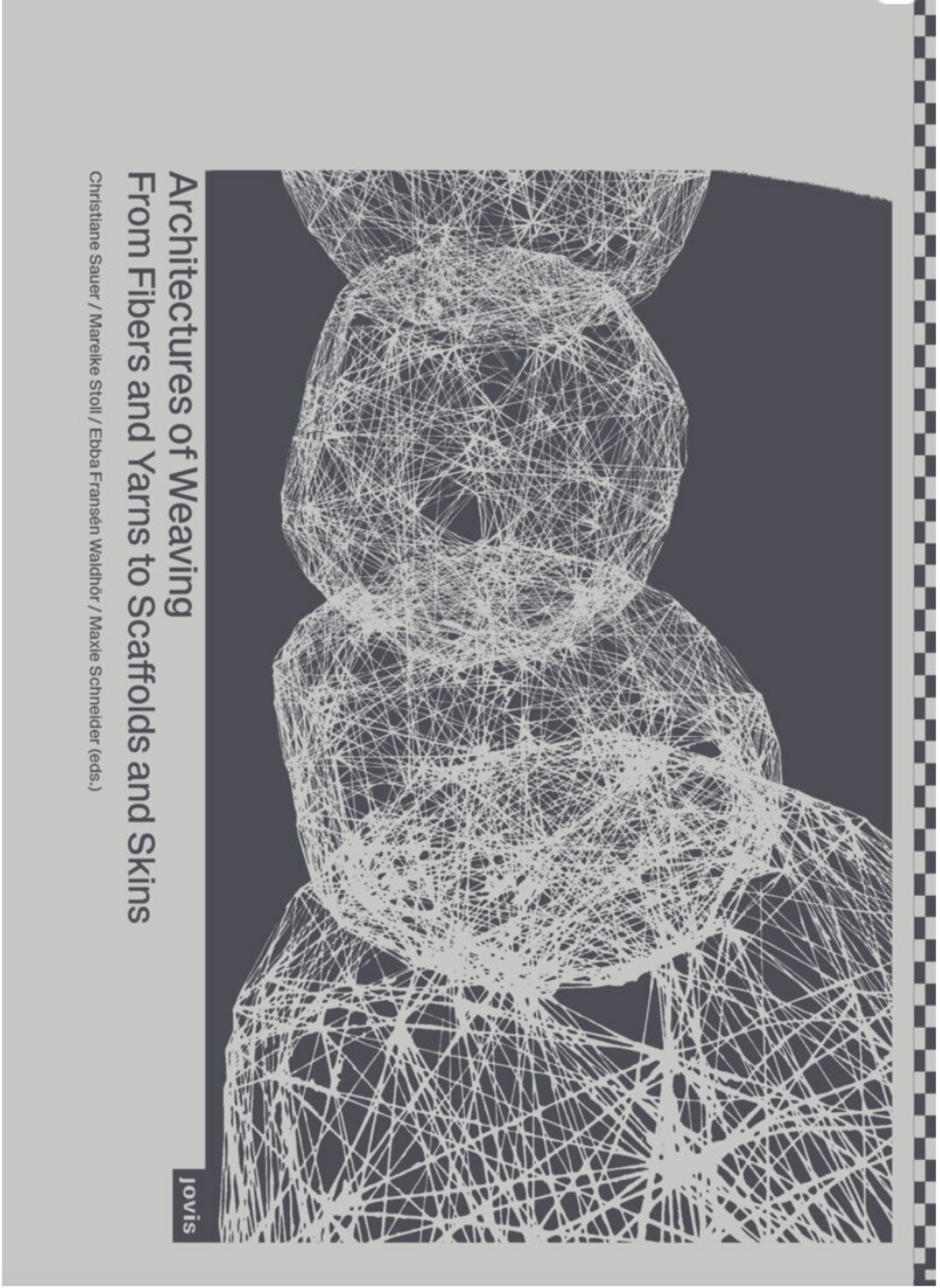
Cover of »Architectures of Weaving«: »Stone Web«. Copyright: weißensee school of art and design berlin / Natascha Unger, Idalene Rapp
Subprojects










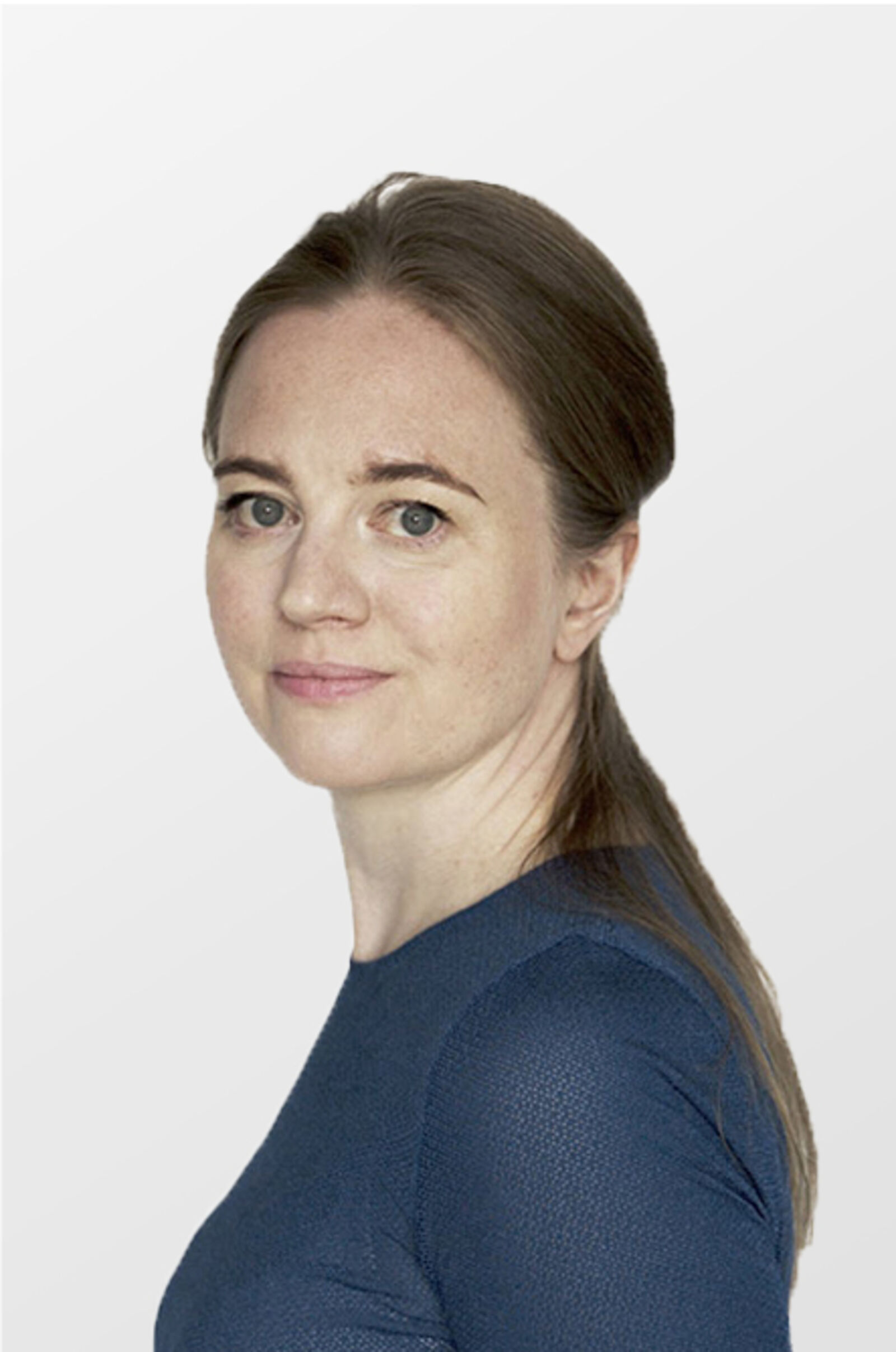





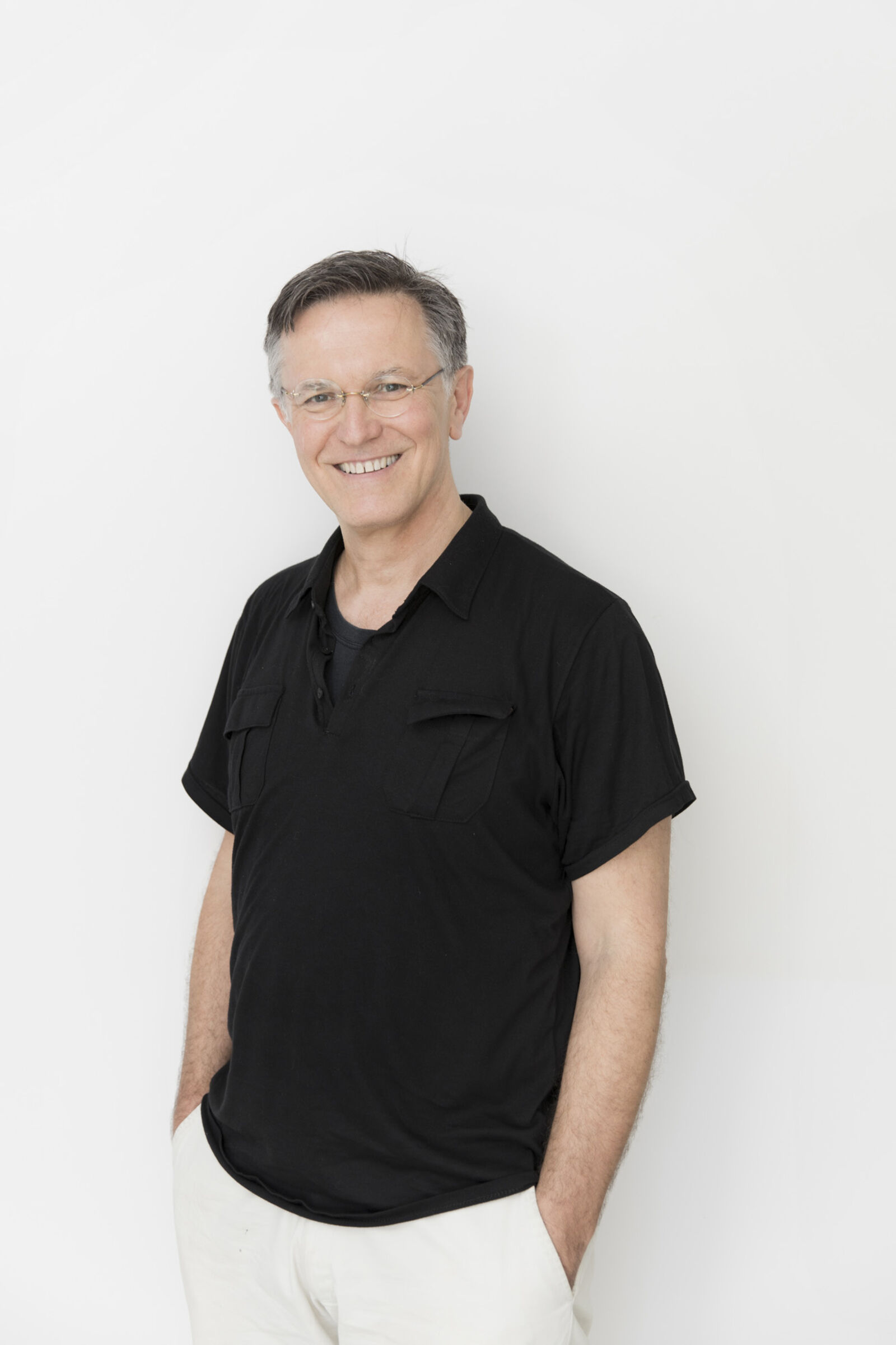





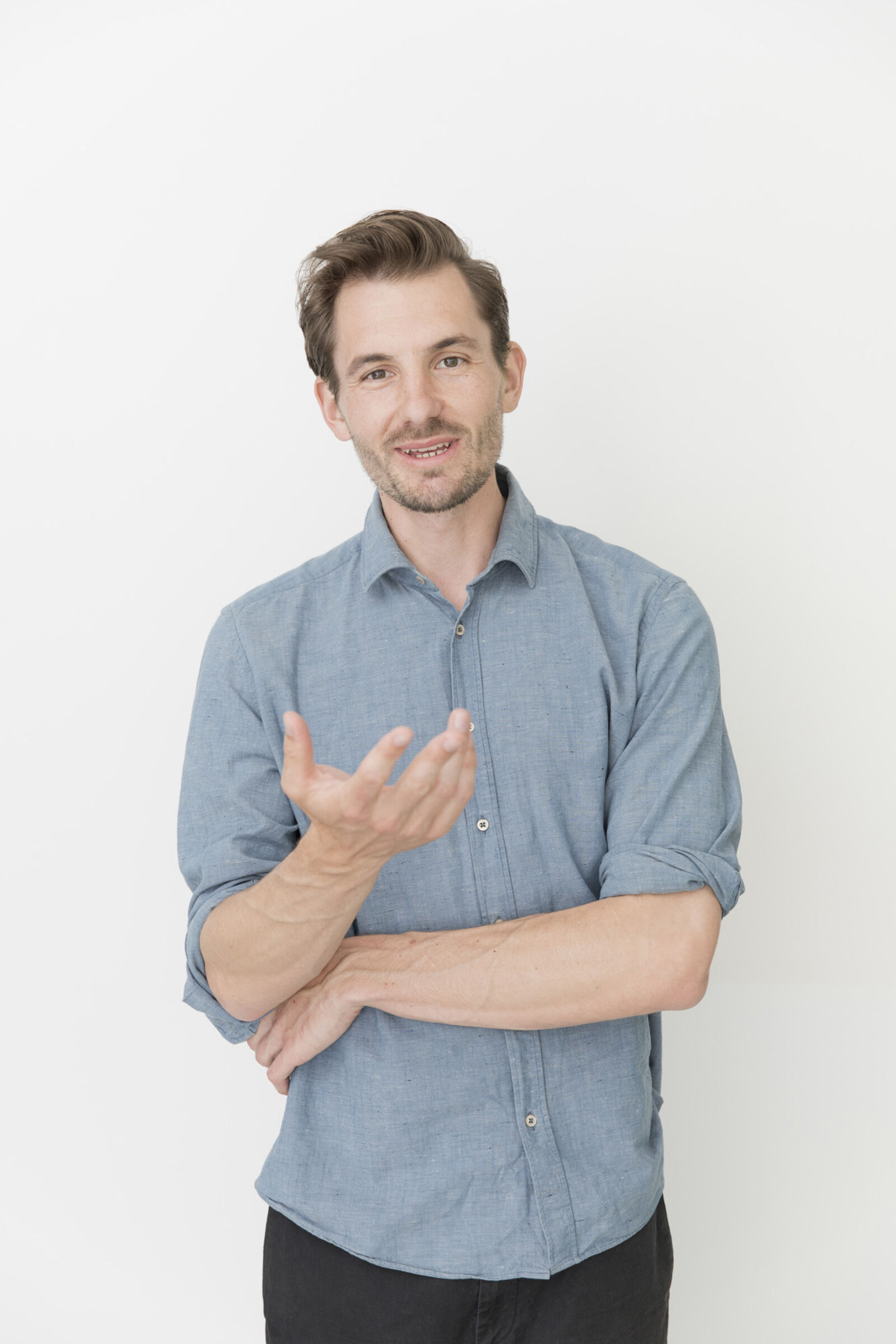

























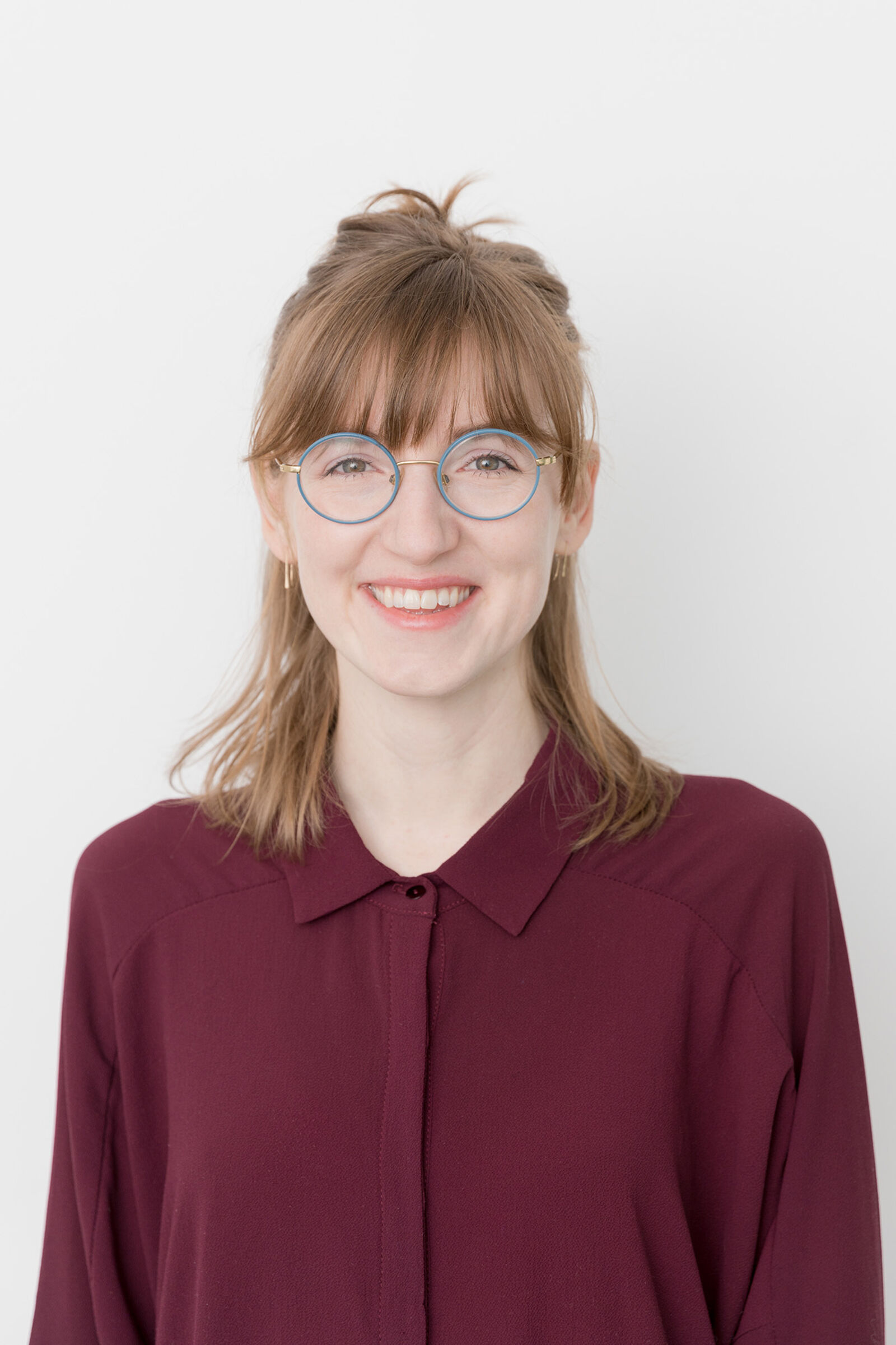




Bi-Leaf - Morphology of a Movement, Antonia Dönitz, Master Thesis Textile and Material Design, 2024. Image Copyright: Antonia Dönitz / weißensee school of art and design

Experimental spatial drawing and processing sedge, Embodied Architecture, 2024. Original photo by Dalma Stift and image by Elaine Bonavia. Copyright: weissensee school of art and design berlin, Matters of Activity

Fermentation preparation with Tanyaporn Tantasathien. Thailand 2024. Copyright: Emma Sicher

Publication »Raue Reihe«, edited by Horst Bredekamp with a first issue by Regine Hengge on »The Essential Role of Microbes in Planetary Metabolism«. Copyright: Matters of Activity


Detail of the Cover from »Lines: A Brief History« by Tim Ingold, Routledge 2007

Detail Poster Weaving Study Day, Material Culture Forum, 11 June 2024. Copyright: University of Cambridge

Ausstellung »Visiting Material Futures«, Futurium 2024. Copyright: David von Becker

Flyer Symposium Regine Hengge

Syntopia 0 – Anthropos I Human. Copyright: Roland Halbe

Image in the background: Shubo (酒母), literally sake mother, is a starter culture that takes weeks to cultivate. Copyright: Maya Hey

Copyright: Matters of Activity

»Yu Li, a diary of cooking a curtain« by Tin Qizhen Gao, detail of curtain. Copyright: Mareike Stoll for MoA Design Research Studio Beyond the Curtain

Visual Master Architecture and Urban Design Thesis Review. Copyright: Leibniz University.

MidJourney generated AI images for the prompts »architectured material across scales«, »topological interlocking«, »elastic instabilities« by Charlett Wenig | Poster Design: Node Berlin Oslo

Cover of »Architectures of Weaving«: »Stone Web«. Copyright: weißensee school of art and design berlin / Natascha Unger, Idalene Rapp

Plektonik Structural Textiles column – continuous wooden ›Active Yarns‹ 40 mm diameter loops. Copyright: Daniel Suárez & Natalija Miodragović

Syntopia 1:Soma I Body. Roland Halbe

Open Space Event, 9 November 2023. Copyright: Matters of Activity

Samples of Flax Fiber Bundles as a precursor for Architectural Yarns, adapted by Node Berlin/Oslo. Copyright: Maxie Schneider, Max Planck Institute of Colloids and Interfaces, weißensee school of art and design, Matters of Activity

Microverse I-6, 2023. Copyright: Kathrin Linkersdorff

Syntopia 1—Soma I Body. Copyright: Karola Dierichs, Max Planck Institute of Colloids and Interfaces, weissensee academy of art and design and Matters of Activity

Copyright: »Spontaneous Generations«, https://www.spontaneousgenerations.com/

Natalija Miodragović and Daniel Suárez at the UIA 2023. Photo: Andrija Mihailović. Copyright: Matters of Activity

Conference Poster »Landwirtschaft und Literatur«, July 2023, photo »Weizenernte bei Eldagsen« by Michael Gäbler, 2013, and Anonymus: »Lesende Frau«, around 1950, from Cornelia Brink: Fotogeschichte. Beiträge zur Geschichte und Ästhetik der Fotografie, Nr. 98, 2005, p. 7; adapted by Node. Copyright: Matters of Activity

Brochures, doctoral presentations 2023. Layout: Ada Favaron. Project coordination: Franziska Wegener

Visual Bauhaus Study Rooms, International Network Meeting, 15+16 June 2023. Copyright: Bauhaus Dessau
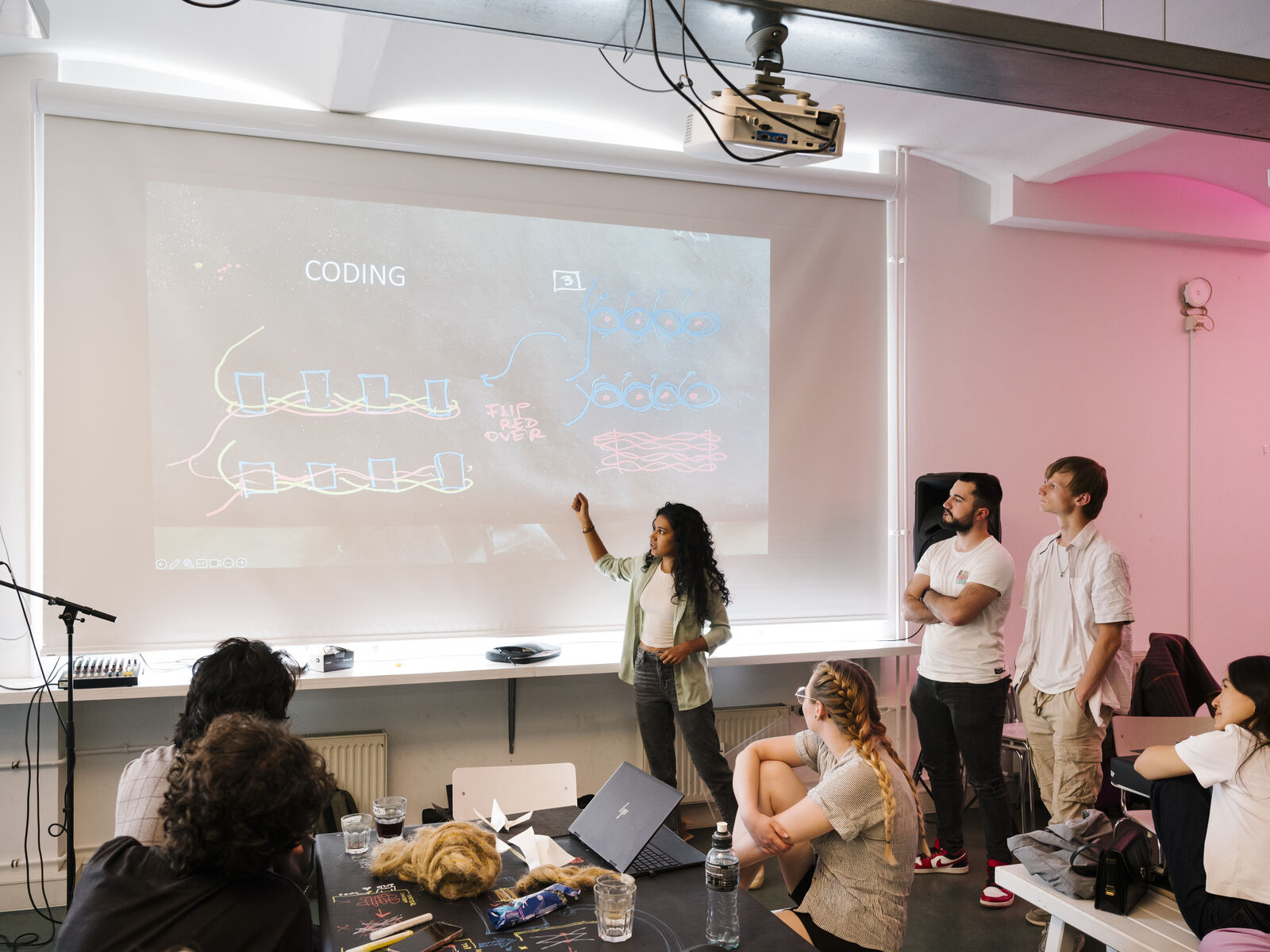
»Textile Gestures - Mapping Tactile Practices with Architectural Yarns«, Hand-on Workshop at Bauhaus Study Rooms. Copyright: Thomas Meyer

Die Ausstellung »wechsel STOFF wechsel« thematisiert die Materialwende in
der Architektur. Sie zeigt mit ihrer Installation als Video- und Foto-Essay Forschungsarbeiten und Materialproben des Masterstudiengangs Architektur Media Management AMM der Hochschule Bochum, der KU Leuven und der Bundesanstalt für Materialforschung und prüfung, die sich mit Aspekten von Zeit, Maßstab, Struktur, Ästhetik und deren Verwandlung beschäftigen. Copyright: Kay Fingerle

Unsteady Matter – Investigating Water-Based Design Pathways and 3D Printing Techniques for Hydrogel Composites. Copyright: Tairan (Aurora) Li, Daniel Suárez, Dr. Bastian Beyer

Driving the Human Book Launch at Matters of Activity, 10 May 2023. Copyright: Camille Blake / Driving the Human

Poster Talk Series, HZK and CARMAH, 2023. Copyright: Humboldt-Universität zu Berlin

Copyright: Mina Mahouti

»The Bark Project«, Charlett Wenig. Copyright: Patrick Walter, MPIKG


Design: studioeins, adapted by MoA. Photo: Michelle Mantel

LEFT: DAOULA | sheen. West African Wild Silk on Its Way. Exhibition View in the Tieranatomisches Theater, Humboldt-Universität zu Berlin, 2022. Copyright: Karola Dierichs | MoA; RIGHT: MoA Research Prototype 1 | Minimal Machines. Construction Process. Copyright: Sebastián Plaza Kutzbach | khb

MoA Diagram: Workshop Research Modules for the Creation, Cognition and Perception of Matter. Copyright: Franziska Wegener

Schematic representation of the pressing process, right: ready pressed bark panels. Copyright: cc-by 4.0 PLOS ONE

Round Table »Rinde: Gestaltung mit Resten«. Design: studioeins, adapted by Matters of Activity

Stone Web. Copyright: weißensee school of art and design berlin/ Natascha Unger & Idalene Rapp


Panel Discussion Materials Matter, May 4th, 2022, Humboldt Lab. Copyright: Matters of Activity

Exhibition Opening DAOULA | sheen, 17.11.2022, Tieranatomisches Theater Berlin. Copyright: Matters of Activity

Annual Conference »Deep Material Futures« at silent green, November 2022. Copyright: Michelle Mantel

Panel »Interdeterminacy and Liveliness« at MoA Annual Conference »Tipping Points« 2021. Copyright: Matters of Activity

Ramification point of 2. order on a Riemann surface (model: 258). © Göttinger Sammlung mathematischer Modelle und Instrumente.

Poster Talk Karin Krauthausen 2022. Copyright: ETH Zürich

Poster PhD presentations 2022. Layout: Ada Favaron

Poster »The Interdisciplinary World of Tangling«. Copyright: Myfwany Evans

Master Students and Visitors at the »Growing Sensecapes« event in the Humboldt Lab. Photo: Carmen Gloria Cuello Quintana.

MoA Project »Bacterial Cellulose: Co-Weaving Biofilms« at the Milano Triennale 2022. Copyright: Triennale Milano – photo by DSL Studio

Minimal Machines 2 – Hygroscopic Hemp. Copyright: Nuri Kang / weißensee school of art and design berlin, Image: Karola Dierichs / weißensee school of art and design berlin, Matters of Activity.

Poster Materials Matter. Copyright: Matters of Activity
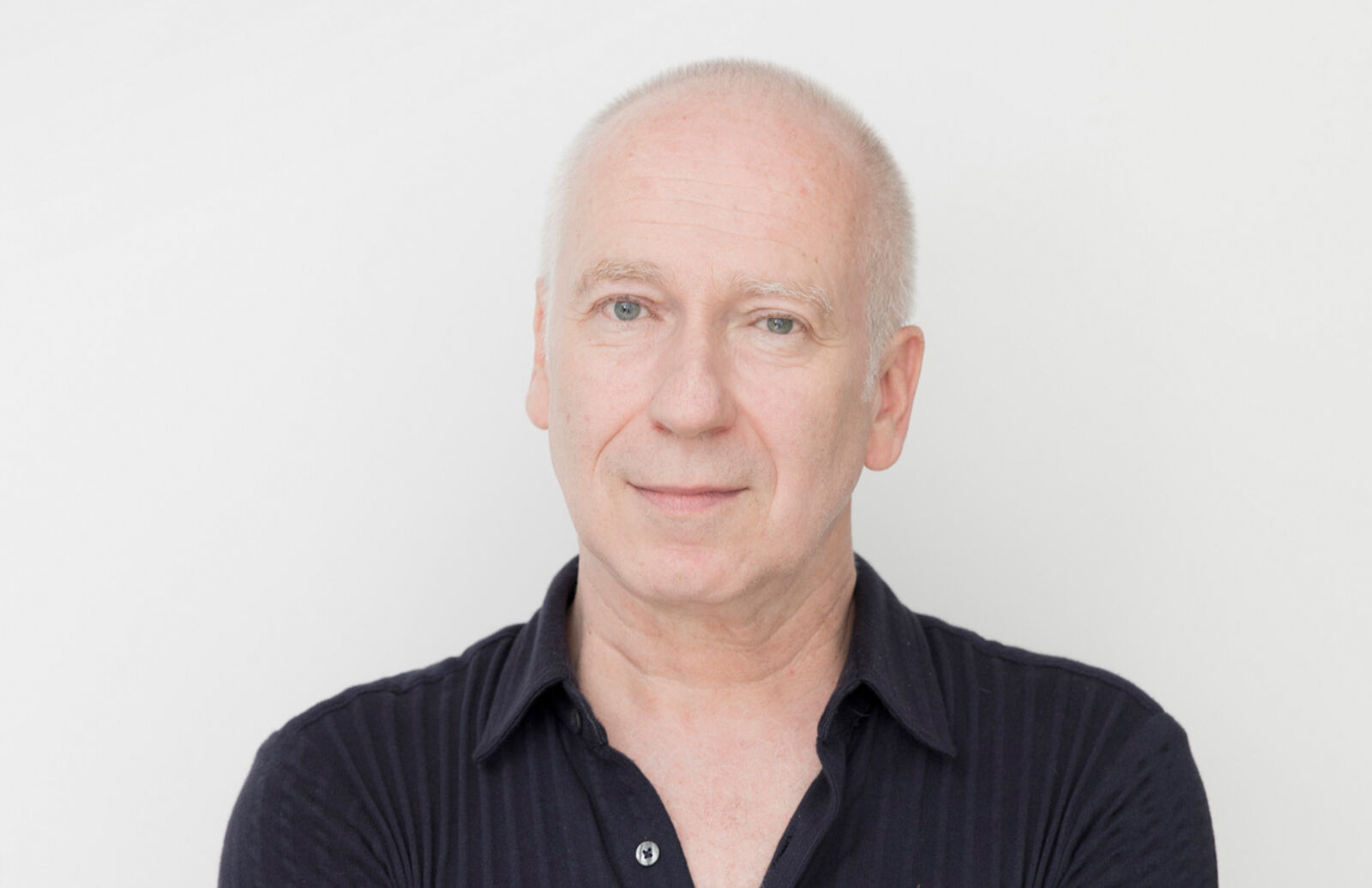
Copyright: Michelle Mantel, Matters of Activity

Designing Matter 2. Copyright: Clara Poeverlein / weißensee school of art and design berlin

Karin Krauthausen in conversation with Milo Rau. Copyright: Mosse Lectures, Humboldt-Universität zu Berlin

Cover »Modell Hütte«. Copyright: diaphanes Verlag

Cover of publication »Active Materials«, edited by: Peter Fratzl, Michael Friedman, Karin Krauthausen and Wolfgang Schäffner. Published December 2021. Copyright: De Gruyter

Tipping Points. Copyright: Josef Luis Pelz & NODE Berlin Oslo

The desk of Paul Valéry with a cahier (workbook), ca. 1935. Copyright: Laure Albin-Guillot / Roger-Viollet; Centre Pompidou

Copyright: Leila Wallisser / weißensee school of art and design berlin

Visual Recording Forum Wissenschaftskommunikation 2021. Copyright: Lorna Schütte for »Wissenschaft im Dialog«

Copyright: Elaine Bonavia & Elisa Martignoni, weißensee school of art and design berlin, 2021

Scaling Fiber: Experimental Yarn. Copyright: weißensee school of art and design berlin

Still from Interview with Bastian Beyer and Skander Hathroubi showing the making of parts of the »Active Curtain Project« shown at the exhibition »After Nature« at Humboldt Lab. Copyright: Anne von Petersdorff (info@annevonpetersdorff.com) for Humboldt-Universität zu Berlin

Architectures of Weaving. Copyright: Xingwen Pan, weißensee school of art and design berlin; NODE Berlin Oslo

Banner »Times of Waste«. Copyright: Rory Witt

Poster Online Lecture Series »Talking Matters«, Copyright: Lucius Fekonja, Bastian Beyer, Iva Rešetar, adapted by NODE Berlin

All 7 Berlin Clusters of Excellence are represented with a film at the foyer at Humboldt Lab. Copyright: Matters of Activity, Humboldt-Universität zu Berlin

Can Bacteria Spin a Yarn? Kick-Off event »MitWissenschaft/ WeSearch«, Humboldt Forum Berlin, 29 April 2021. Copyright: Humbolt Forum

Hella Jongerius, Woven Cosmos – Pliable Architecture (2021), Copyright: Hella Jongerius / VG Bild-Kunst 2021, Photo: Laura Fiorio.

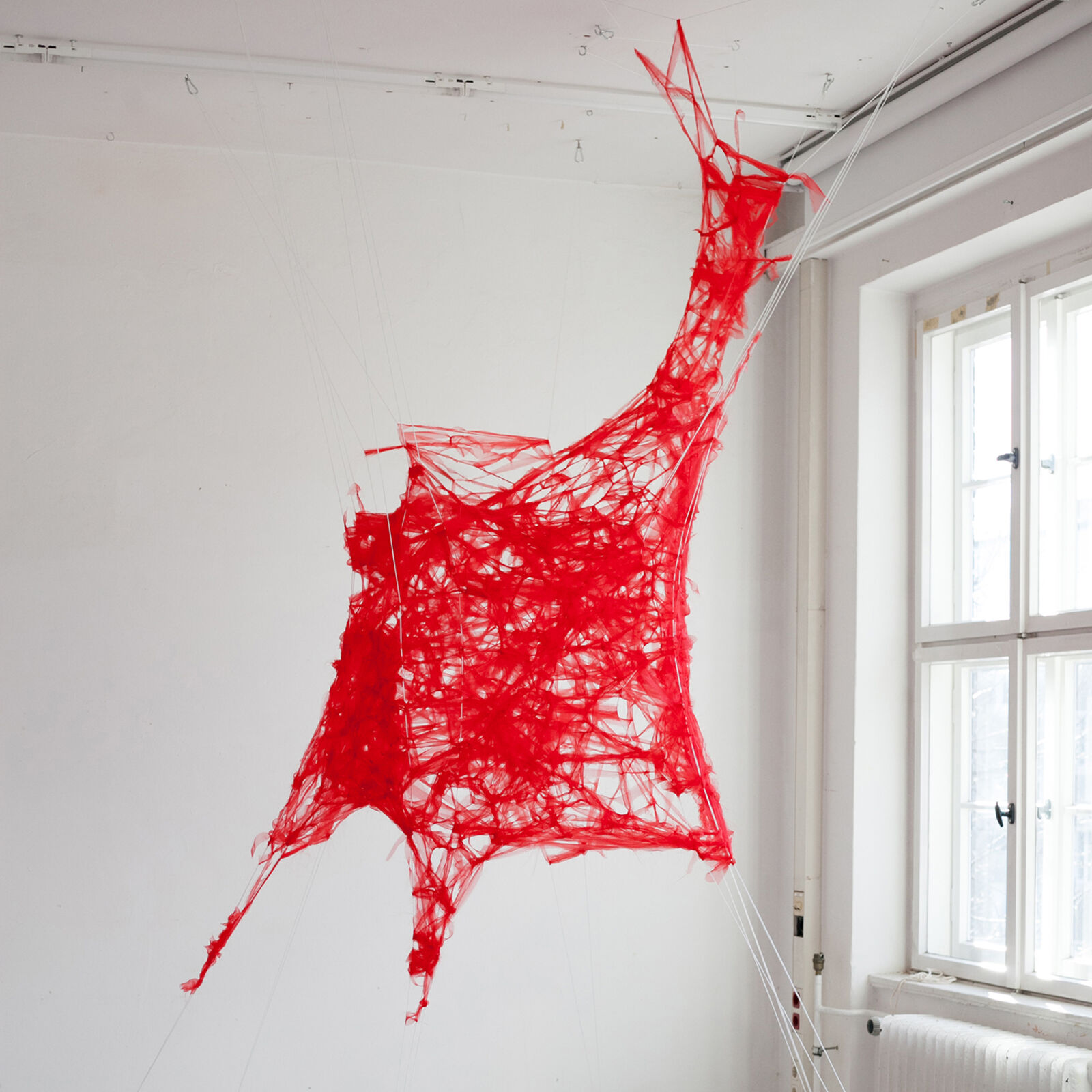
Project: Lara Rocho, weißensee school of art and design berlin. Copyright: Dr. Mareike Stoll

Poster Shelf Live. Copyright: Matters of Activity

Key Visual MoA Annual Conference. Copyright: Matters of Activity

Botanical Comrades. Copyright: Berlin Science Week
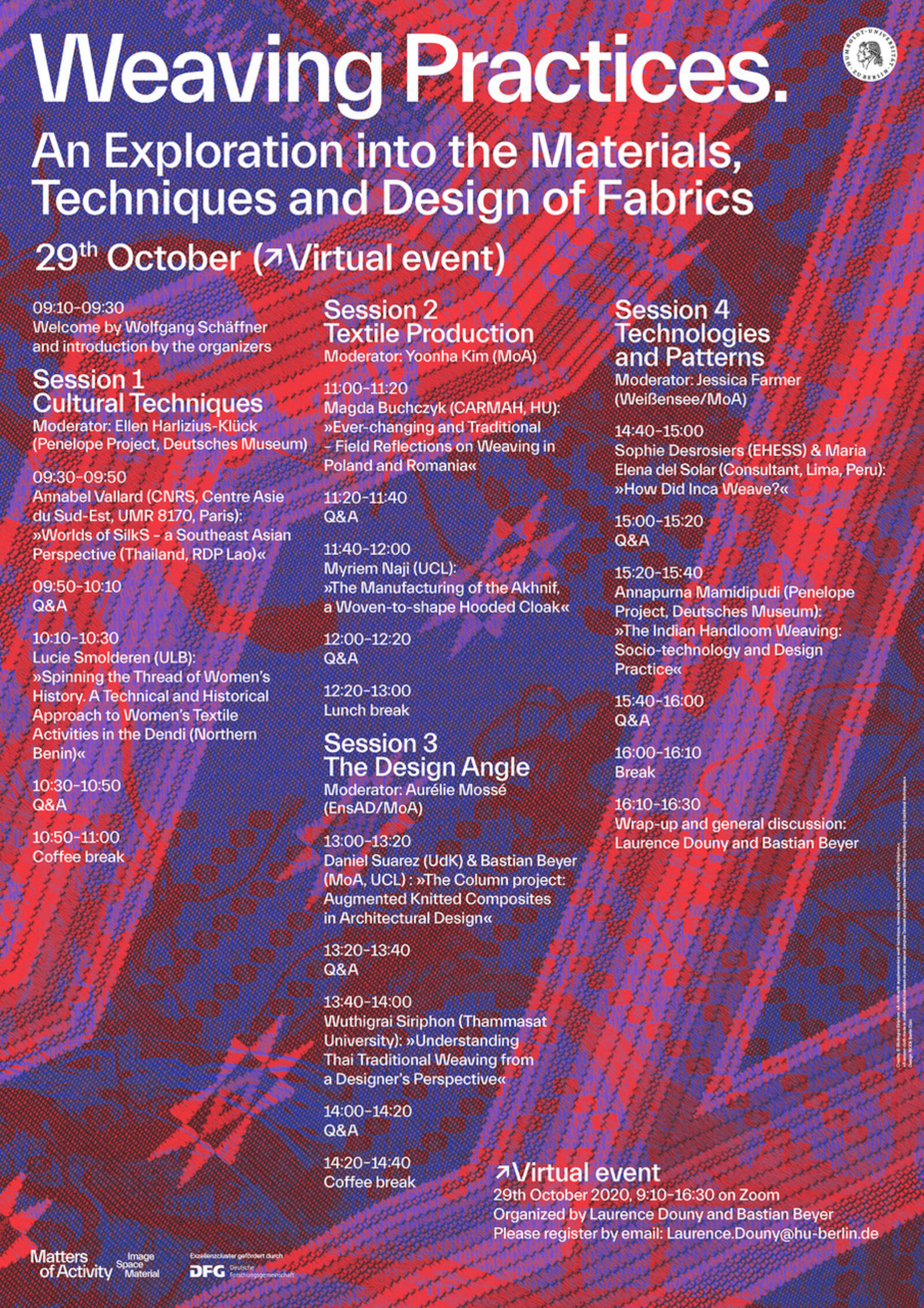
Poster Weaving Practices, Copyright: Matters of Activity

Building Tangled Structures through Experimental Geometry and Topology. Copyright: Myfanwy Evans, Institute for Mathematics, University of Potsdam

Elena Eulitz, Extension Charm (2019/2020. Copyright: weißensee school of art and design berlin

»The Bark Project«, Charlett Wenig. Copyright: Patrick Walter, MPIKG

Poster »Past and Present in Mathematical Weaving«. Copyright: Matters of Activity

Yin 阴 , Cindy Peng. Copyright: weißensee school of art and design berlin, Cindy Peng

Poster Workshop »Material as Environmental Device«. Copyright: Kristina Pfeifer »detail woven skin of Kurdish black tent« & Cécile Bidan »detail of bacterial cellulose biofilm«

»Wir sind Humboldt«. Image brochure of Humboldt-Universität zu Berlin. Fotos: Matthias Heyde, Grafic Design: Weserloh Media. Copyright: Humboldt-Universität zu Berlin

»Scaling Nature (1): Wrinkels«: Liquid Lacquer. Copyright: weißensee school of art and design berlin / Luis Magg

Cover Make It Real. Copyright: Diaphanes

»Scaling Nature (2): Fibers, Muscles and Bones« Final Presentation. Copyright: weissensee academy of art berlin

Symposium »On Activity«. Copyright: »Matters of Activity«

Design Studio »Scaling Nature (1): Wrinkels«, Design: Juni Neyenhuys and Stefanie Eichler. Copyright: weißensee kunsthochschule berlin

Images from slide collections, 1970s. Top: molecular models of retinal; center left: bleached purple membrane in cuvette; center right: chemically modified preparations of purple membrane in centrifuge tubes; bottom left: Max Planck Institute of Biochemistry, 1974 (Copyright: www.luftbild-bertram.de); bottom right: electron micrograph of cell surface. By courtesy of D. Oesterhelt, Martinsried

The weaving/braiding robots are part of an experimental setting of the ERC group PENELOPE. Copyright: Karin Krauthausen

Cacao Cloud by Clemens Winkler. Copyright: Michelle Mantel

Clemens Winkler is presenting his »Wolkenkammer« during the project presentation of »Object Space Agency«. Copyright: Franziska Wegener.

Image of a first 3D-printed model of an E. coli cell with matrix cocoon - created by Lynette Cegelski’s research group. Copyright: Lynette Cegelski

Bacterial cellulose curtain. Experiments: Bastian Beyer and Iva Rešetar (design), Skander Hathroubi (microbiology). Photo: Bastian Beyer, adapted by Ada Favaron. Project coordination: Elisabeth Obermeier & Franziska Wegener
Hengge, R. 2024. The Biological Foundation of Sustainability: The Essential Role of Microbes in Planetary Metabolism. Raue Reihe / Raw Studies, ed. Bredekamp, H. for the Cluster of Excellence Matters of Activity. Berlin: De Gruyter.
Friedman, M. 2023. On Joachim Jungius’ Texturæ Contemplatio. Cham: Springer International Publishing.
https://doi.org/10.1007/978-3-031-40881-6
Bauer, F., Kim, Y., Marienberg, S., Schäffner, W. eds. 2024. Toward a New Culture of the Material. Berlin: De Gruyter.
https://doi.org/10.1515/ 9783110714883
Friedman, M., Krauthausen, K. eds. 2022. Model and Mathematics: From the 19th to the 21st Century. Cham: Birkhäuser.
https://link.springer.com/book/10.1007/978-3-030-97833-4
Sauer, C., Stoll, M., Fransén Waldhör, E., Schneider, M. eds. 2022. Architectures of Weaving. From Fibers and Yarns to Scaffolds and Skins. Berlin: Jovis.
https://doi.org/10.1515/9783868598315
Fratzl, P., Friedman, M., Krauthausen, K., Schäffner, W. eds. 2021. Active Materials. De Gruyter STEM. Berlin: De Gruyter.
https://www.degruyter.com/document/isbn/9783110562064/html
Krauthausen, K., Ladewig, R. eds. 2021. Modell Hütte. Von emergenten Strukturen, schützender Haut und gebauter Umwelt. Zürich: Diaphanes.
https://www.diaphanes.net/titel/modell-huette-4170
Krauthausen, K., Kammer, S. eds. 2020. Make it Real. Für einen strukturalen Realismus. With contributions by Blumentrath, H., Kammer, S., Krauß, A., Krauthausen, K., Meinecke, T., Moser, N., Peltzer, U., Pierstorff, C., Rau, M., Röggla, K., Strowick, E. Zurich: Diaphanes.
Beyer, B., Rešetar, I. 2024. »Entangled Scales: Structures and Environments of Cellulose Biofilms.« In Towards a New Culture of the Material, edited by Bauer, F., Kim, Y., Marienberg, S., Schäffner, W. forthcoming.
Beyer, B., Suárez, D. 2024. »Biocalcite Tripod.« In Trazos edición biomateriales, edited by Pozzetti, G., Jalkh, H. Buenos Aires, Argentina: Sistemas Materiales, 104.
Hehemeyer-Cürten, J., Wenig, C. 2024. »The Bark Project.« In Trazos edición biomateriales, edited by Pozzetti, G., Jalkh, H. Buenos Aires, Argentina: Sistemas Materiales, 98.
Hengge, R., Evans, M. E. 2024. »Buckling, Wrinkling, and Folding: Microstructure, Active Matter Behavior, and Geometric Modeling of Bacterial Biofilms.« In Toward a New Culture of the Material, edited by Bauer, F., Kim, Y., Marienberg, S., Schäffner, W. Berlin: De Gruyter, 109-120.
Hengge, R., Krauthausen, K. 2023. »The Event of a Fiber.« In Architectures of Weaving: From Fibers and Yarns to Scaffolds and Skins, edited by Sauer, C., Stoll, M., Fransén Waldhör, E., Schneider, M. Berlin: Jovis Verlag GmbH, 22-28.
Krauthausen, K. 2023. »Geschichten vom Ende. Institution und Roman bei Hubert Fichte.« In Anstalten machen. Der Institutionendiskurs seit der Aufklärung, edited by Hubmann, P., Päthe, T. (editors) Brill: Fink Verlag, 312-341.
https://brill.com/edcollbook/title/61924?language=de
Mosse, A., Zamora, D. S., Beyer, B. 2023. »Towards a Bacterially-Induced Textile Architecture.« In Design for Rethinking Resources, edited by Ramsgaard Thomsen, M., Ratti, C., Tamke, M. Sustainable Development Goals Series. Cham: Springer, 47-63.
https://doi.org/10.1007/978-3-031-36554-6_5
Schäffner, W. 2023. »The Design Turn Revisited: A Revolution of Design in the Spirit of Active Matter.« In Material Trajectories. Designing With Care?, edited by Perraudin, L., Winkler, C., Mareis, C., Held, M. Lüneburg: meson press, 33-49.
https://doi.org/10.14619/2201
Beyer, B. 2022. »Bacterial Loom.« In Architectures of Weaving, edited by Sauer, C., Stoll, M., Fransén Waldhör, E., Schneider, M. Berlin: Jovis, 29-31.
Bonavia, E., Dierichs, K. 2022. »Augmented Spinning.« In The Architectures of Weaving. From Fibers and Yarns to Scaffolds and Skins, edited by Sauer, C., Stoll, M., Fransén Waldhör, E., Schneider, M. Berlin: Jovis, 34-37.
Friedman, M., Krauthausen, K., Evans, M. 2022. »Interview with Myfanwy Evans: Entanglements on and Models of Periodic Minimal Surfaces.« In Model and Mathematics: From the 19th to the 21st Century, edited by Friedman, M., Krauthausen, K. Cham: Birkhäuser, 255-266.
https://link.springer.com/chapter/10.1007/978-3-030-97833-4_7
Friedman, M., Krauthausen, K., Hashagen, U. 2022. »Interview with Ulf Hashagen: Exhibitions and Mathematical Models in the 19th an 20th Centuries.« In Model and Mathematics: From the 19th to the 21st Century, edited by Friedman, M., Krauthausen, K. Cham: Birkhäuser, 403-430.
https://link.springer.com/chapter/10.1007/978-3-030-97833-4_14
Friedman, M., Krauthausen, K., Matt, A. D. 2022. »Interview with Andreas Daniel Matt: Real-Time Mathematics.« In Model and Mathematics: From the 19th to the 21st Century, edited by Friedman, M., Krauthausen, K. Cham: Birkhäuser, 431-445.
https://link.springer.com/chapter/10.1007/978-3-030-97833-4_15
Friedman, M., Krauthausen, K., Sattelmacher, A. 2022. »Interview with Anja Sattelmacher: Between Viewing and Touching – Models and Their Materiality.« In Model and Mathematics: From the 19th to the 21st Century, edited by Friedman, M., Krauthausen, K. Cham: Birkhäuser, 381-401.
https://link.springer.com/chapter/10.1007/978-3-030-97833-4_13
Friedman, M., Krauthausen, K. 2022. »How to Grasp an Abstraction: Mathematical Models and Their Vicissitudes Between 1830 and 1950.« In Model and Mathematics: From the 19th to the 21st Century, edited by Friedman, M., Krauthausen, K. Cham: Birkhäuser, 1-49.
https://link.springer.com/chapter/10.1007/978-3-030-97833-4_1
Guiducci, L., Schneider, M., Shone, J., Sauer, C. 2022. »Woven Paper Bridge.« In Architectures of Weaving. From Fibers and Yarns to Scaffolds and Skins, edited by Sauer C., Stoll M., Fransén Waldhör E., Schneider M. Berlin: Jovis, 41-43.
Guiducci, L. 2022. »Interweaving Disciplines - How Biological Materials Inspire New Teaching and Research Formats in Design.« In Architectures of Weaving. From Fibers and Yarns to Scaffolds and Skins, edited by Sauer, C., Stoll, M., Fransén Waldhör, E., Schneider, M. Berlin: Jovis, 74-80.
Rešetar, I., Sauer, C. 2022. »Architectural Yarns: Temporal Structures for Environmental Regeneration.« In Architectures of Weaving: From Fibers and Yarns to Scaffolds and Skins, edited by Sauer, C., Stoll, M., Waldhör, E. F., Schneider, M. Berlin: Jovis, 140-148.
https://doi.org/10.1515/9783868598315
Wenig, C. 2022. »The Bark Project. Combining Science and Design to Elaborate New Models of Production for the Design Industry.« In Design, Gestaltung, Formatività. Philosophies of Making, edited by Ribault, P. Basel: Birkhäuser, 273-284.
https://doi.org/10.1515/9783035622447-021
Aizenberg, J., Friedman, M., Krauthausen, K. 2021. »Interview with Joanna Aizenberg: On Responsive and Adaptive Materials.« In Active Materials, edited by Fratzl, P., Friedman, M., Krauthausen, K., Schäffner, W. Berlin: De Gruyter, 79-94.
https://www.degruyter.com/document/isbn/9783110562064/html
Correll, N., Friedman, M., Krauthausen, K. 2021. »Interview with Nikolaus Correll: Robotic Materials.« In Active Materials, edited by Fratzl, P., Friedman, M., Krauthausen, K., Schäffner, W. Berlin: De Gruyter, 175-192.
https://www.degruyter.com/document/isbn/9783110562064/html
Dunlop, J., Krauthausen, K. 2021. »Interview with John Dunlop: Shape-Changing Materials.« In Active Materials, edited by Fratzl, P., Friedman, M., Krauthausen, K., Schäffner, W. Berlin: De Gruyter, 95-116.
Fratzl, P., Schäffner, W. 2021. »On the Activity of Materials.« In Active Materials, edited by Fratzl, P., Friedman, M., Krauthausen, K., Schäffner, W. Berlin/Boston: De Gruyter STEM, 37 - 54.
https://doi.org/10.1515/9783110562064-002
Friedman, M., Joanny, F., Krauthausen, K. 2021. »Interview with Jean-François Joanny: Activity, Instabilities, and Defects.« In Active Materials, edited by Fratzl, P., Friedman, M., Krauthausen, K., Schäffner, W. Berlin: De Gruyter, 117-130.
Friedman, M., Krauthausen, K., Mazzolai, B. 2021. »Interview with Barbara Mazzolai: Plants, Plantoids, and Active Materials.« In Active Materials, edited by Fratzl, P., Friedman, M., Krauthausen, K., Schäffner, W. Berlin: De Gruyter, 131-146.
https://www.degruyter.com/document/isbn/9783110562064/html
Friedman, M., Krauthausen, K., Shepherd, R. 2021. »Interview with Robert Shepherd: on Soft Robots, Biomimetics, and Beyond.« In Active Materials, edited by Fratzl, P., Friedman, M., Krauthausen, K., Schäffner, W. Berlin: De Gruyter, 147-158.
https://www.degruyter.com/document/isbn/9783110562064/html
Friedman, M., Krauthausen, K., Speck, T. 2021. »Interview with Thomas Speck: »You Don't Want to Build an Oak Tree – you Want to Invent it.« Plants as Active Matter.« In Active Materials, edited by Fratzl, P., Friedman, M., Krauthausen, K., Schäffner, W. Berlin: De Gruyter, 57-78.
Friedman, M., Krauthausen, K. 2021. »Materials Matter: Introduction.« In Active Materials, edited by Fratzl, P., Friedman, M., Krauthausen, K., Schäffner, W. Berlin: De Gruyter, 3-36.
https://doi.org/10.1515/9783110562064-001
Hathroubi, S., Beyer, B. 2021. »La récolte des biofilms.« In MàJ Design, environnements techniques & pratiques exploratoires, edited by Bertrand, G., Favard, M., Lartigaud, D.O. Saint-Etienne: Cité du Design, 9-10.
Hengge, R., Krauthausen, K. 2021. »Das Ereignis der Faser.« In Hella Jongerius: Kosmos Weben, edited by Rosenthal, S., Meister, C. Berlin: Gropius Bau, 48-53.
Hengge, R., Krauthausen, K. 2021. »The Event of a Fibre.« In Hella Jongerius: Woven Cosmos, edited by Rosenthal, S., Meister, C. Berlin: Gropius Bau, 54-59.
Krausse, J., Krauthausen, K. 2021. »Die Hütte träumt vom Haus. Gespräch mit Joachim Krausse.« In Modell Hütte. Von spontaner Emergenz, schützender Haut und gebauter Umwelt, edited by Krauthausen, K., Ladewig, R. Zurich: Diaphanes, 247-266.
https://www.diaphanes.net/titel/modell-huette-4170
Krauthausen, K. 2021. »Die ›Dringlichkeit der Form‹. Rögglas strukturaler Realismus.« In Gespenstischer Realismus. Texte von und zu Kathrin Röggla, edited by Degner, U., Gürtler, C. Vienna: Sonderzahl Verlag, 81-102.
Krauthausen, K. 2021. »Fern des Gleichgewichts. Zur Poetik gegenwärtiger Literatur (Zeitpfeil und Zeitverlust).« In Literatur nach der Digitalisierung. Zeitkonzepte und Gegenwartsdiagnosen, edited by Kreuzmeier, E., Schumacher, E. Berlin: De Gruyter, 83-109.
Krauthausen, K. 2021. »Zuflucht, Eisenhütte und lebende Architektur: Modell Hütte. Einleitung.« In Modell Hütte. Von spontaner Emergenz, schützender Haut und gebauter Umwelt, edited by Krauthausen, K., Ladewig, R. Zurich: Diaphanes, 9-46.
https://www.diaphanes.net/titel/modell-huette-4170
Sattler, F. 2021. »Between Bodies. The Space between Animal and Human.« In zwischen körpern/among bodies, edited by Kleine Humboldt Galerie. Berlin: K. Verlag, 10–13.
Kammer, S., Krauthausen, K., Meinecke, T. 2020. »(Nicht) Ins Gebüsch kotzen, oder: Die Anstrengung des Realismus. Interview mit Thomas Meinecke.« In Make it real. Für einen strukturalen Realismus, edited by Kammer, S., Krauthausen K. Zurich: Diaphanes, 163-199.
https://www.diaphanes.net/titel/make-it-real-4171
Kammer, S., Krauthausen, K., Peltzer, U. 2020. »Das Buch existiert ja gar nicht. Interview mit Ulrich Peltzer.« In Make it real. Für einen strukturalen Realismus, edited by Kammer, S., Krauthausen, K. Zurich: Diaphanes, 201-227.
https://www.diaphanes.net/titel/make-it-real-4171
Kammer, S., Krauthausen, K., Rau, M. 2020. »Realismus ist keine Geisterbahn. Interview mit Milo Rau.« In Make it real. Für einen strukturalen Realismus, edited by Kammer, S., Krauthausen, K. Zurich: Diaphanes, 243-275.
https://www.diaphanes.net/titel/make-it-real-4171
Kammer, S., Krauthausen, K. 2020. »Für einen strukturalen Realismus. Einleitung.« In Make it real. Für einen strukturalen Realismus, edited by Kammer, S., Krauthausen, K. Zurich: Diaphanes, 7-79.
https://www.diaphanes.net/titel/make-it-real-4171
Krauthausen, K., Friedman, M. 2020. »Active Matter.« In Materials Research: Inspired by Nature. Innovation Potential of Biologically Inspired Materials, edited by Fratzl, P., Jacobs, K., Möller, M., Scheibel, T., Sternberg, K. acatech DISKUSSION. München: utzverlag, 80-81.
https://en.acatech.de/publication/materials-research/
Krauthausen, K. 2020. »Zeichen der Abwesenheit. Paul Valéry und der Akt des Zeichnens.« In Zeich(n)en. Setzen. Bedeutungsgenerierung im Mäandern zwischen Bildern und Begriffen, edited by Leisch-Kiesl, M., Grotz, S. Linzer Beiträge zur Kunstwissenschaft und Philosophie. Bielefeld: transcript Verlag, 91-114.
Macdonald, S. 2020. »Re-worlding the museum. Or the museum for possible futures.« In Das Museum der Zukunft, edited by schnittpunkt and Baur J. Bielefeld: transcript Verlag, 189-94.
Sattler, F. 2020. »Gesteine im Museum werfen keine Schatten.« In Oliver Thie. Die Wahrheit über den Ursprung der Welt. Exhibition catalogue, Tieranatomisches Theater, Berlin, edited by Thie O., Sattler, F. Berlin: Humboldt-Universität zu Berlin.
Sattler, F. 2020. »Kurzer Prozess, lange Wirkung. Das Temporäre Objektlabor im Tieranatomischen Theater.« In Das Temporäre Objektlabor. Ein Experiment zur Erforschung von Objekten aus wissenschaftlichen Sammlungen, edited by Thie, O. Berlin: Humboldt-Universität zu Berlin, Cluster of Excellence »Image Knowledge Gestaltung«.
https://books.google.de/books?id=Dy_ezQEACAAJ
Beyer, B., Suaréz, D., Palz, N. 2019. »Microbiologically Activated Knitted Composites: Reimagining a column for the 21st century.« Presented at EKAADE SIGRADI 2019 Conference in Porto, 12.09.19. Best paper award. In Proceedings of 37 eCAADe and XXIII SIGraDi Joint Conference, »Architecture in the Age of the 4Th Industrial Revolution«, Porto 2019, edited by Sousa, J. P., Henriques, G. C., Xavier, J. P. São Paulo: Blucher.
https://doi.org/10.5151/proceedings-ecaadesigradi2019_619
Friedman, M., Krauthausen, K. 2019. »Aktive Materie.« In Materialforschung: Impulsgeber Natur. Innovationspotenzial biologisch inspirierter Materialien und Werkstoffe, edited by Fratzl, P., Jacobs, K., Möller, M., Scheibel, T., Sternberg, K. acatech DISKUSSION. München: utzverlag, 84–86.
https://www.acatech.de/publikation/materialforschung-impulsgeber-natur/
Hengge, R. 2019. »Durch den Datendschungel auf der Suche nach Erkenntnis: Experimentieren in der molekularen Mikrobiologie.« In Experimentieren. Einblicke in Praktiken und Versuchsaufbauten zwischen Wissenschaft und Gestaltung, edited by Margin, S.H., Rabe, W., Schäffner, W., Schmirgel, F. transcript Verlag, 123-135.
https://doi.org/10.14361/9783839446386-fm
Krauthausen, K. 2019. »Es gibt Hoffnung – Maileingang.« Exhibit nsalation by Röggla, K.: »Der Elefant im Raum (18.5.-2.6.2019)« within the series of events »Wo kommen wir hin (21.3.-2.6.2019)«. Conceived by Röggla, K., Sander, K., Tsangaris, M. in Zusammenarbeit mit Meerapfel, J. In Elefant im Raum, edited by Röggla, K., Lammert, M., Schaerf, E. Berlin: Akademie der Künste Berlin, 3.
Krauthausen, K. 2019. »Wette auf die Wirklichkeit. Erzählkalkül in ›die ansprechbare‹ und ›Wiedereintritt in die Geschichte I‹ von Kathrin Röggla.« In Literatur im Ausnahmezustand. Beiträge zum Werk Kathrin Rögglas, edited by Marx, F., Schöll, J. Reihe: Literatur und Gegenwart, Band 2. Würzburg: Königshausen & Neumann, 155-181.
Serra, D. O., Hengge, R. 2019. »Cellulose in Bacterial Biofilms.« Cham: Springer International Publishing, 355-392.
https://doi.org/10.1007/978-3-030-12919-4_8
Spirandelli, I., Coles, R., Friesecke, G., Evans, M. E. 2024. »Exotic self-assembly of hard spheres in a morphometric solvent.« Proceedings of the National Academy of Sciences, 121 (15)
https://doi.org/10.1073/pnas.2314959121
Bonavia, E., Farmer, J., Mballa-Ekobena, A., Rosenthal, N., Douny, L., Dierichs, K. 2023. »Minimal machines: augmented reality for filament-construction of partially ordered systems in architecture.« Construction Robotics.
https://doi.org/https://doi.org/10.1007/s41693-023-00109-3
Friedman, M., Krauthausen, K., 2023. »On the Agency and Activity of Materials in the 21st Century.« In From Bacteria to Gaia: Levels of Biological Agency, special issue. Spontaneous Generations, 11 (1)
https://static1.squarespace.com/static/63c0bc7dd96a9d4c120951fb/t/64f0e7ce49d9a80ab7ba928b/1693509583563/Friedman+%26+Krauthausen+Article.pdf
Hengge, R., Pruteanu, M., Stülke, J., Tschowri, N., Turgay, K. 2023. »Recent advances and perspectives in nucleotide second messenger signaling in bacteria.« microLife, 4: uqad015.
https://doi.org/10.1093/femsml/uqad015
Junkermeier, E. H., Hengge, R. 2023. »Local signaling enhances output specificity of bacterial c-di-GMP signaling networks.« In Nucleotide Second Messengers in Prokaryotes, special issue. microLife, 4: uqad026.
https://doi.org/10.1093/femsml/uqad026
Krauthausen, K. 2023. »Messenger Service: Hubert Fichte Writes History.« In Hubert Fichte and the Poetics of Syncretism, special issue. Colloquia Germanica, 55 (3-4): 230-266.
https://www.narr.de/colloquia%20germanica%2055,%203-4-1067-1/
Onaga, L., Douny, L. 2023. »Making Animal Materials in Time.« Historical Studies in the Natural Sciences, 53 (3): 197-220.
https://doi.org/10.1525/hsns.2023.53.3.197
Schamberger, B., Ziege, R., Anselme, K., Ben Amar, M., Bykowski, M., Castro, A. P. G., Cipitria, A., Coles, R. A., Dimova, R., Eder, M., Ehrig, S., Escudero, L. M., Evans, M. E., Fernandes, P. R., Fratzl, P., Geris, L., Gierlinger, N., Hannezo, E., Iglič, A., Kirkensgaard, J. J. K., Kollmannsberger, P., Kowalewska, Ł., Kurniawan, N. A., Papantoniou, I., Pieuchot, L., Pires, T. H. V., Renner, L. D., Sageman‐Furnas, A. O., Schröder‐Turk, G. E., Sengupta, A., Sharma, V. R., Tagua, A., Tomba, C., Trepat, X., Waters, S. L., Yeo, E. F., Roschger, A., Bidan, C. M., Dunlop, J. W. C. 2023. »Curvature in Biological Systems: Its Quantification, Emergence, and Implications across the Scales.« Advanced Materials, 35: 2206110.
https://doi.org/10.1002/adma.202206110
Guiducci, L., Kycia, A., Sauer, C., Fratzl, P. 2022. »Self-organized rod undulations on pre-stretched textiles.« Bioinspiration & Biomimetics, 17: 036007.
https://doi.org/10.1088/1748-3190/ac5b85
Hengge, R. 2022. »Non-Human Others – a Message from the Planetary Invisibles.« ISSN 2701-2557. Gastgarten, 3 (1/2022): 24-29.
Hyde, S. T., Evans, M. E. 2022. »Symmetric tangled Platonic polyhedra.« Proceedings of the National Academy of Sciences, 119 (1): e2110345118.
https://doi.org/10.1073/pnas.2110345118
Dierichs, K., Menges, A. 2021. »Designing architectural materials: from granular form to functional granular material.« Bioinspiration & Biomimetics, 16 (6): 065010.
https://doi.org/10.1088/1748-3190/ac2987
Oster, M., Dias, M. A., de Wolff, T., Evans, M. E. 2021. »Reentrant tensegrity: A three-periodic, chiral, tensegrity structure that is auxetic.« Science Advances, 7 (50)
https://doi.org/10.1126/sciadv.abj6737
Wenig, C., Dunlop, J. W. C., Hehemeyer-Cürten, J., Reppe, F. J., Horbelt, N., Krauthausen, K., Fratzl, P., Eder, M. 2021. »Advanced materials design based on waste wood and bark.« Philosophical Transactions of the Royal Society A: Mathematical, Physical and Engineering Sciences, 379 (2206): 20200345.
https://doi.org/10.1098/rsta.2020.0345
Ziege, R., Tsirigoni, A., Large, B., Serra, D. O., Blank, K. G., Hengge, R., Fratzl, P., Bidan, C. M. 2021. »Adaptation of Escherichia coli Biofilm Growth, Morphology, and Mechanical Properties to Substrate Water Content.« ACS Biomaterials Science & Engineering, 7 (11): 5315-5325.
https://doi.org/10.1021/acsbiomaterials.1c00927
Hengge, R. 2020. »Crosstalking second messengers.« Nature Microbiology, 6 (1): 9-10.
https://doi.org/10.1038/s41564-020-00842-3
Pruteanu, M., Hernández Lobato, J. I., Stach, T., Hengge, R. 2020. »Common plant flavonoids prevent the assembly of amyloid curli fibres and can interfere with bacterial biofilm formation.« Environmental Microbiology, 22 (12): 5280-5299.
https://doi.org/10.1111/1462-2920.15216
Pruteanu, M., Hernández Lobato, J. I., Stach, T., Hengge, R. 2020. »Common plant flavonoids prevent the assembly of amyloid curli fibres and can interfere with bacterial biofilm formation.« Environmental Microbiology, 22: 5280-5299.
https://doi.org/10.1111/1462-2920.15216
Richter, A. M., Possling, A., Malysheva, N., Yousef, K. P., Herbst, S., von Kleist, M., Hengge, R. 2020. »Local c-di-GMP Signaling in the Control of Synthesis of the E. coli Biofilm Exopolysaccharide pEtN-Cellulose.« Journal of Molecular Biology, 432 (16): 4576-4595.
https://doi.org/10.1016/j.jmb.2020.06.006
Skrodzki, M., Zimmermann, E., Polthier, K. 2020. »Variational shape approximation of point set surfaces.« Computer Aided Geometric Design, 80: Article 101875.
https://doi.org/10.1016/j.cagd.2020.101875
Turcaud, S., Thorin, A., Bréchet, Y., Fratzl, P., Dunlop, J. W. 2020. »Twisters: An analogy of bilayers for twisting.« Journal of the Mechanics and Physics of Solids, 134: 103742.
https://doi.org/10.1016/j.jmps.2019.103742
Krauthausen, K. 2019. »Speaking Anomalies: Subjunctive Narration in Kathrin Röggla’s ›die ansprechbare‹ and ›Der Wiedereintritt in die Geschichte I‹.« In On Anomalies, special issue. Modern Language Notes (MLN), 134 (3): 550-571.
https://doi.org/10.1353/mln.2019.0043
Serra, D. O., Hengge, R. 2019. »A c-di-GMP-Based Switch Controls Local Heterogeneity of Extracellular Matrix Synthesis which Is Crucial for Integrity and Morphogenesis of Escherichia coli Macrocolony Biofilms.« Journal of Molecular Biology, 431 (23): 4775-4793.
https://doi.org/10.1016/j.jmb.2019.04.001
Douny, L., Hernández Lobato, J. I., Séré, A., Sawadogo, S., Hengge, R. 2023. »The hunter shirt: the role of Acacia nilotica in fermentative textile dyeing.« Presented at the XXXI International Horticultural Congress (IHC2022): International Symposium on Natural Colorants from Plants. International Society for Horticultural Science (ISHS), 67-76.
https://doi.org/10.17660/ActaHortic.2023.1361.8
Suárez, D., Miodragović, N. 2023. »Plektonik—Active Yarns for Adaptive Loop-Based Material Systems.« Basel: Springer International Publishing, 317-339.
https://doi.org/10.1007/978-3-031-36554-6_21
Wenig, C. 2022. »The Bark Project - Material Research in the Natural Science and Design.« Presented at Design × Sustainability: Materiality/Systems/Shared Prosperity, Annual Meeting DGTF 2022, Kiel, 2- 3 June 2022. Berlin: Deutsche Gesellschaft für Designtheorie und -forschung e.V..
https://doi.org/10.25368/2022.136
Skrodzki, M., Zimmermann, E., Polthier, K. 2019. »Variational Shape Approximation of Point Set Surfaces.« Presented at the International Geometry Summit (IGS), Vancouver, Canada, 17-21 June 2019. 54-57.
Douny, L. 2024. West African Wild Silks: A Conjuncture of Material Temporalities. Materials and Time: The Anthology, edited by Thebaud-Sorger, M., Bensaude-Vincent, B., Christie, J. R.R., Quirke, V., Rainhorn, J., Thibault-Starzyk, F., Werrett, S.
https://materials.hypotheses.org/west-african-wild-silks-a-conjuncture-of-material-temporalities
Cluster of Excellence »Matters of Activity«, Humboldt-Universität zu Berlin 2023. Report (2019–2022).
Iva Rešetar, Maxie Schneider, Josephine Shone, Christiane Sauer 2022. Tangled Wall. Architectural Project. Presented in Design Lab #13. Material Legacies. Exhibition. Cluster of Excellence »Matters of Activity«, Humboldt-Universität zu Berlin, Museum of Decorative Arts. Kunstgewerbemuseum. 3 November 2022 - 26 February 2023. In collaboration with Sächsisches Textilforschungsinstitut e. V. (STFI). Berlin. Since 2 February 2022.
https://www.smb.museum/en/museums-institutions/kunstgewerbemuseum/exhibitions/detail/design-lab-13/
Highlighted by TAZ, 15.11.2022.
Beyer, Bastian (project lead), Tairan, Li (collaborator), Suárez, Daniel (collaborator). 2023. »Unsteady Matter Project.«
https://www.matters-of-activity.de/en/activities/11193/unsteady-matter
Guiducci, L., Schneider, M., Shone, J., Sauer, C. 2021. »Woven paper bridge.«
Linkersdorff, K. WORKS: Microverse. Exhibition. Photographs created by Kathrin Linkersdorff in collaboration with Regine Hengge. Cluster of Excellence Matters of Activity, Humboldt-Universität zu Berlin. Deichtorhallen, Hamburg. 26 October 2023 - 21 January 2024.
Beyer, B., De Visscher, E., Hathroubi, S., Hengge, R., Liedtke, M., Mareis C., Miodragovic, N., Rešetar, I., Suárez, D. Bacterial Cellulose: Co-Weaving Biofilms. Exhibition. Installation for the Triennale XXIII: »Unknown Unknows, An Introduction to Mysteries«. Milan. 15 July 2022 - 11 December 2022.
https://www.matters-of-activity.de/de/activities/8617/bacterial-cellulose-co-weaving-biofilms
Beyer, Bastian (organizer), Bauer, Frank (organizer). Growing Sensecapes. Open Design Master's Students' Projects Exhibited at Humboldt Lab. Exhibition. Cluster of Excellence Matters of Activity, Humboldt-Universität zu Berlin. Humboldt Forum. 22 July 2022 - 25 July 2022.
https://www.matters-of-activity.de/en/activities/8774/growing-sensecapes
Beyer, Bastian, Suárez, Daniel, Mossé, Aurélie. Biocalcification Textile Architecture Workshop. Exhibition. École nationale supérieure des Arts Décoratifs (EnsAD). 17 March 2022 - 18 March 2022.
https://softmatters.ensadlab.fr/biocalcified-textiles/
Douny, L. (curator), Krauthausen, K. (curator), Sattler, F. (curator), Thindi, T. (film installation). DAOULA | sheen. West African Wild Silk on Its Way. Exhibition. In cooperation with Séré, A., Sawadogo, S., Dayo, L., Dayo, H., Fofana, A., Sakira, S., Dao, D., Sanogo, B., Séré, M., Konate, A., Ilboudo, M. in Burkina Faso and Bonavia, E., Buch, S., Dierichs, K., Eder, M., Farmer, J., Hathroubi, S., Hengge, R., Hernández Lobato, J. I., Illing-Günther, H., Hassoune, S., Mählmann, J., Panzer, M. M., Rešetar, I., Rosenthal, N., Santos Thomas, C., Sauer, C., Sermonet, J., Shone, J., Schneider, M., Strauß, W. in Germany. Cluster of Excellence Matters of Activity, Humboldt-Universität zu Berlin. Tieranatomisches Theater. 17 November 2022 - 29 April 2023.
https://tieranatomisches-theater.de/en/project/2022-11_daoula-sheen_exhibition_en/
Wenig, C. (designer), Hehemeyer-Cürten, J. (designer) 10. Recycling Designpreis. Exhibition. Marta Herford Museum. 19 June 2022 - 23 October 2022.
https://marta-herford.de/ausstellungen/10-recyclingdesignpreis/
Wenig, C., Hehemeyer-Cürten, J. Mode und Natur. Exhibition. Galerie Handwerk, Munich. 4 May 2021 - 12 June 2021.
https://www.hwk-muenchen.de/galerie
Beyer, B., Suarez, D., Tairan, L. »Unsteady Matter.« At the exhibition: Materialzukünfte besuchen. Workshop series about the materials of tomorrow Visiting Material Futures. Pop-up exhibition. Futurium. 3 June 2024 - 1 August 2024.
https://www.matters-of-activity.de/en/activities/11193/unsteady-matter
Beyer, B., Suaréz, D. »Column Project.« At the exhibition: Museum of Vibrant Matter. Porto Design Biennale 2021, Portugal. 2 July 2021 - 25 July 2021.
https://thearchiveofvibrantmatter.portodesignbiennale.pt/en
Beyer, Bastian (designer), Suárez, Daniel (designer) »Porto Design Biennale.« At the exhibition: Museum of Vibrant Matter. Porto, Portugal. 2 June 2021 - 25 July 2023.
https://casa-design.pt/en/exhibitions/museu-da-materia-viva
Sauer, C. (project leader), Miodragović, N. (project leader, designer), Beyer, B. (designer), Rešetar, I. (designer), Suarez, D. (designer, video producer), Singer, N. (designer), Hengge, R. (microbiologist), Hathroubi, S. (microbiologist), Eder, M. (materials scientist), Bidan, C. (materials scientist) »Active Curtain.« Humboldt Labor, Humboldt Forum Berlin. Since 29 April 2021.
https://www.humboldt-labor.de/en/projects/clusters-of-excellence/active-curtain-project
Zheng, B., Hengge, R. et al. »Wanwu Council.« At the exhibition: Wanwu Council. Gropius Bau Berlin. 6 August 2021 - 8 August 2021.
https://www.berlinerfestspiele.de/en/gropiusbau/programm/2021/zheng-bo/wanwu-council.html
Almpani-Lekka, Dimitra, Asa, Pelin, Dierichs, Karola, Ficht, Johanna, Göngrich, Erik, Kieffer, Lynn Hyun, Kubelík, Anna, Meyer, Vera, Stock, Robert, Wilhelm, Nora. 2024. Symbiotic Futures 1.0. Workshop. Berlinische Galerie, with Philippi, Nils. Berlin. Germany. 5 June 2024.
https://berlinischegalerie.de/veranstaltung/symbiotic-futures-1-0/
Bonavia, E., Farmer, J., Douny, L., Krauthausen, K., Sattler, F., Dierichs, K. 2023. Weaving with the Data Glove - From the Cocoon into the Computer and Back Again. Press briefing and public presentation. Cluster of Excellence »Matters of Activity«, Tieranatomisches Theater, Humboldt-Universität zu Berlin. 16 February 2023.
https://www.matters-of-activity.de/en/activities/10084/weaving-with-the-data-glove-fro m-the-cocoon-into-the-computer-and-back-again
Bonavia, E., Farmer, J., Miletitch, R., Eder, M., Krauthausen, K., Dierichs, K. 2023. Are you ready to thread? Berlin Science Week at Matters of Activity. Cluster of Excellence »Matters of Activity«, Humboldt-Universität zu Berlin, Berlin. 9 November 2023.
Miodragović, N., Eder, M., Hehemeyer-Cürten, J. 2023. An Exploration of Bark, Willow and Wool. Conversation moderated by Dr. Manuel Rivera (RIFS). Panel – Local biomaterials as design Innovators. ZUR NACHAHMUNG EMPFOHLEN! expeditionen in ästhetik und nachhaltigkeit. Uferhallen Berlin. 13 July 2023.
https://zur-nachahmung-empfohlen.de/panel-local-fibrous-materials-as-design-innovators-an-exploration-of-bark-willow-and-wool/
B, Beyer, M, Schneider Hydrogel Workshop. Talk at the Smartes Material für überhitze Städte, Futurium, Berlin. 14 March 2024.
https://futurium.de/de/open-lab-abend/open-lab-abend-smartes-material-fuer-ueberhitzte-staedte/open-lab-abend-smartes-material-fuer-ueberhitzte-staedte
Highlighted by https://www.matters-of-activity.de/en/activities/13731/materialzukunfte-besuchen.
Hengge, R. From second messenger signaling and biofilm architecture to human-curated plant-microbe interactions in traditional practices and contemporary art. Talk at the Microbiology Lecture Series, Institut Pasteur, Paris. 5 July 2024.
https://research.pasteur.fr/en/event/seminar-dept-microbiology-from-second-messenger-signaling-and-biofilm-architecture-to-human-curated-plant-microbe-interactions-in-traditional-practices-and-contemporary-art-seminar-dept-microbiolo/
Rapp, R., Hengge, R. Blurring the boundaries: when science labs become art studios and vice versa. Talk at the Symposium on Encounters between Art and Biology, Ludwig-Maximilians-Universität, München. 12 June 2024.
https://campusmartinsried.de/wp-content/uploads/2024/05/Symposium_Encounters_Poster_.pdf
Dierichs, K. Cultures of Creation: »The Intelligence of Art« in Computational Design. Talk at the IntCDC Constructive Conversations, Stuttgart. Hybrid. 13 November 2023.
https://www.intcdc.uni-stuttgart.de/news/events/IntCDC-Constructive-Conversations-brCultures-of-Creation-The-Intelligence-of-Art-in-Computational-Design/
Dierichs, Karola. Cultures of Creation: »The Intelligence of Art« in Materials Design. Talk at the Architectured Materials Across Scales, Berlin. 14 December 2023.
https://www.matters-of-activity.de/en/activities/12221/architectured-materials-across-scales
Friedman, M., Krauthausen, K. Model and Mathematics at the End of the 19th Century: Between Materiality and Representation. Talk at the SLSAeu23: Models, Metaphors and Simulations, ELINAS Center for Literature and Natural Science, Erlangen. 18 May 2023.
Hengge, R. C-di-GMP signaling: The unexpected complexity of bacterial second messenger synthesis, function and turnover. Keynote at the Annual Conference 2023 of the Assocation for General and Applied Microbiology (VAAM), Hans Günter Schlegel Lecture 2023. Georg-August-Universität, Göttingen. 10 September 2023.
Highlighted by Biospektrum 6/2023, p. 660.
Hengge, R. Large-scale extracellular matrix architecture and tissue-like morphogenesis as emerging properties of bacterial multicellularity. Talk at the DFG-SPP2389 Kick-off Meeting on Emergent Functions of Bacterial Multicellularity, Technische Universität Dresden. 12 January 2023.
Kammer, S., Krauthausen, K. (lecturers) Landwirtschaft & Literatur. Einführung. Talk at the Landwirtschaft & Literatur, Cluster of Excellence »Matters of Activity«, Humboldt-Universität zu Berlin. 13 July 2023.
Krauthausen, K. (talk), Kammer, S., Keck, A. (organizers), Der Stoff der Materialwissenschaften. Überlegungen zu materials by design, active matter, and biomimesis. Talk at the Ludwig-Maximilian-Universität München. 21 June 2023.
Krauthausen, K. (talk), Mengaldo, E., Nicolosi, R. (organizers) Die Rhetorik des Materials. Naturnachahmung und Verlebendigung in den zeitgenössischen Materialwissenschaften. Talk at the Die unsichtbare Ubiquität der Wissenschaftsrhetorik. Aktualität und Perspektiven eines vernachlässigten Wissenschaftsparadigmas, Ludwig-Maximilian-Universität München. Ludwig-Maximilians-Universität München. 23 June 2023.
Krauthausen, K., Sattler, F. (lecturers), Desrosiers, S., Vallard, A. (organizers) DAOULA: Weaving an Exhibition from Interdisciplinary Research Strands. Talk at the Les objets comme source: les textiles et leurs matériaux. III (UE 181), EHESS, Paris. Presentation of the interdisciplinary research structure in the project Weaving at the Cluster of Excellence „Matters of Activity“ and how to accompany, motivate and reflect an highly interdisciplinary research via the exhibition DAOULA (curated by L. Douny, K. Krauthausen, S. Sattler)". Hybrid. 1 March 2023.
https://enseignements.ehess.fr/2022-2023/ue/181
Sicher, E., Hengge, R. Interspecies Cooperation / Fermentation from the Microbial and the Human Perspective. Talk at the Brown Bag Brunch, Cluster of Excellence »Matters of Activity«, Humboldt-Universität zu Berlin. 4 April 2023.
Beyer, B., Bauer, F., Jalkh, H., Schäffner, W. Constructing activity. Keynote at the Trazos biomateriales, Biomaterial Traces Conversation. Centro Cultural Recoleta, Buenos Aires. 2 December 2022.
http://www.centroculturalrecoleta.org/agenda/trazos-biomateriales
Beyer, Bastian, Liedtke, Moritz. Making of Milano Triennale Installation. Talk at the Regine Hengge Lab, Humboldt-Universität zu Berlin, Faculty for Microbiology. Cluster of Excellence Matters of Activity, Humboldt-Universität zu Berlin. 24 October 2022.
Beyer, Bastian, Suárez, Daniel. KNIT-A-VERSE Conference. Talk at the Knit-A-Verse Conference, On the Scale of Architecture. Amsterdam University of Applied Science, Amsterdam. Hybrid. 30 October 2022.
Beyer, Bastian. Fuzzy Lineaments. Talk at the BioID Lecture Series, Bartlett School of Architecture, London. Virtual. 3 May 2022.
Friedman, Michael, Krauthausen, Karin, »Active Materials«. Talk at the Technical University of Darmstadt (ZOOM with Berlin). Talk on active materials and the research presented in »Active Materials« (eds. Peter Fratzl, Michael Friedman, Karin Krauthausen, Wolfgang Schäffner). In the frame of the seminar on BioRobotics by Marco Tamborini. Hybrid. 14 June 2022.
Hengge, R., Schäffner, W. »Active Curtain Project«. Long Night of the Sciences, »Meet the Scientist«, Humboldt Laboratory, Berlin. 2 July 2022.
Hengge, R. C-di-GMP signaling in bacterial multicellularity. Talk at the EMBO Conference on Bacterial Networks (Bacnet22), European Molecular Biology Organization, Sant Feliu. 5 September 2022.
Hengge, R. Linking bacterial growth, survival and multicellularity with second messengers as triggers and drivers. Talk at the DFG-SPP1879 International Symposium on ‘Nucleotide Second Messenger Signaling in Bacteria‘, Harnack-Haus, Berlin. 23 May 2022.
Hengge, R. Linking bacterial growth, survival and multicellularity with second messengers as triggers and drivers. Talk at the International Workshop on the Interdisciplinary Life of Microbes: from Single Cells to Multicellular Aggregates, Max Planck Institute for the Physics of Complex Systems, Dresden. 7 November 2022.
Hengge, R. Multicellularity as an emergent property of life: spatial organization of molecular signaling and gene expression in bacterial biofilms. Talk at the Invited lecture series of the Institute of Plant Physiology and Microbiology, Universität Zürich. 6 June 2022.
Krauthausen, K., Rau, M. Performance und Politik – Gespräch mit Milo Rau. Gespräch at the Mosse Lectures: Theater der Gegenwart, Institut für deutsche Literatur, Humboldt-Universität zu Berlin. Hybrid. 13 January 2022.
Highlighted by https://www.mosse-lectures.de/.
Krauthausen, K. Modell Hütte. Talk at the ETH Zürich. 28 September 2022.
Krauthausen, Karin, Aktive Materialien. Talk at the Bauhaus-Universität Weimar. Invited talk on the emergence and activity of structures - a research presented in the publications »Active Materials« (eds. Peter Fratzl, Michael Friedman, Karin Krauthausen, Wolfgang Schäffner) and »Modell Hütte« (eds. Karin Krauthausen and Rebekka Ladewig). Invitation by Henning Schmidgen (Professur medialer Welten). Hybrid. 10 May 2022.
https://www.uni-weimar.de/en/media/chairs/media-studies/theorie-medialer-welten/aktuelles/titel/aktive-materialien/
Beyer, B., Bidan, C. Column Project, Bacterially induced calcite precipitation on a textile substrate. Talk at the Curvobio Workshop, Max Planck Institute of Colloids and Interfaces, Potsdam. Virtual. 7 April 2021.
Beyer, B., Cubasch, A., Fratzl, P., Hengge, R., Mareis, C., Perraudin, L., Sauer, C., Schäffner, W., for the Cluster of Excellence »Matters of Activity«. Can Bacteria Spin a Yarn? We Need a New Culture of Materials. Panel Presentation at the »Can Bacteria Spin a Yarn? We Need a New Culture of Materials«, Humboldt Forum Berlin. Hybrid. 29 April 2021.
https://www.humboldtforum.org/en/programm/termin/science-humanities/do-bacteria-spin-a-yarn-20472/
Beyer, B. Negotiating Structure. Keynote at the Annual Summit of the Hub for Biotechnology for the Built Environment, Living Construction. Newcastle, UK. Virtual. 7 July 2021.
https://www.youtube.com/watch?v=9yOvK39S6HE&ab_channel=HBBEHubforBiotechnologyintheBuiltEnvironment
Bonavia, E., Mballa-Ekobena, A., Farmer, J., Douny, L., Rosenthal, N., Stoll, M., Wenig, C., Dierichs, K. Augmented Spinning: Haptic Construction of a Filament-based Architectural Material System. Talk at the 25th Annual DRHA Conference »Digital Matters: Designing/Performing Agency for the Anthropocene«, Scene, Atmosphere & Architecture. Heilig-Geist-Kapelle, Berlin. Organized by the Cluster of Excellence »Matters of Activity. Image Space Material«, Humboldt-Universität zu Berlin, in cooperation with the Cluster of Excellence EXC 2020 »Temporal Communities: Doing Literature in a Global Perspective«, Freie Universität Berlin, and the practice-based research project »Viral Theatres«. Hybrid. 5 September 2021.
https://www.drha.uk/2021/program-2/#h.hsg54n4r2ivu
Dierichs, K. Designing Matter: Granular Architectures. Lecture at the »hallo biologie # 1«, CyPhyLab Lecture Series, CyPhyLab, Technische Universität Berlin. Virtual. 9 June 2021.
https://www.architektur.tu-berlin.de/fileadmin/i41/Aktuelles/SoSe2021_FG_Werner_hallo_biologie_v4.pdf
Fratzl, P. Active Matter. Keynote at the Engineering Life – Active Matter Across Scales, Steigenberger Hotel de Saxe, Dresden. Center for Molecular Bioengineering (B CUBE) of the Technische Universität Dresden. Hybrid. 27 September 2021.
https://physics-of-life.tu-dresden.de/events/2022/06/27/engineering-life-active-matter-across-scales
Hengge, R. Multicellularity as an emergent property of life: Spatial organization of gene expression and c-di-GMP signaling in Escherichia coli biofilms. Talk at the Lecture Series at Wissenschaftskolleg Greifswald, Wissenschaftskolleg, Greifswald. Virtual. 7 June 2021.
Hengge, R. Multicellularity as an emergent property of life: spatial organization of molecular signaling and gene expression in bacterial biofilms. Talk at the Wissenschaftskolleg Greifswald. Virtual. 7 June 2021.
Krauthausen, K. Hubert Fichtes »ethnologische Form«. Panel Presentation at the GSA - German Studies Association Annual Conference, Hubert Fichte and the Poetics of Syncretism I. Indianapolis, USA. Hybrid. 1 October 2021.
Miodragović, N., Singer, N., Suarez, D., Sauer, C. Fibrous Scaffold: Structural Textile with Active Yarns. Panel Presentation at the »Aachen-Dresden-Denkendorf International Textile Conference 2021«, New applications/New Markets - Fibrous scaffold: structural textile with active yarns. Stuttgart. Virtual. 10 November 2021.
https://www.aachen-dresden-denkendorf.de/itc/programm/programm/
Razghandi, K. Design-Science Studio »Scaling Nature« – from Bio-inspiration to Co-creation. Panel Presentation at the »Material Trajectories. Designing with Care« – 17th Annual Conference of German Society for Design Theory and Research (DGTF), Co-creation, Sympoiesis, Prototyping. Cluster of Excellence »Matters of Activity«, Humboldt-Universität zu Berlin. Virtual. 7 May 2021.
https://materialtrajectories.dgtf.de/Project-Panel-Co-Creation-Sympoiesis-Prototyping
Wenig, C., Lecturer, Prinzler, T., / Moderator Die Haut der Bäume. Wie aus Rinde Mode wird. Talk at the Wissensstadt Berlin, Berliner Senat. 10 August 2021.
https://www.mpg.de/16989439/wissensstadt-berlin-2021-mpg-programm
Beyer, B., Hathroubi, S. Co-weaving with Biofilms: Grown Cellulosic Structures. Talk at the Workshop »Material as Environmental Device«, Cluster of Excellence »Matters of Activity«, Humboldt-Universität zu Berlin. Virtual. 10 September 2020.
https://www.matters-of-activity.de/en/activities/2249/material-as-environmental-device
Douny, L. Degumming West African Wild Silks in the 20th and 21st Century Burkina Faso. Talk at the »Animal Materialities«, joined panel of History of Science Society and Society for the History of Technology (SHOT), Animal Materialities. Virtual. 10 October 2020.
https://www.historyoftechnology.org/annual-meeting/2020-shot-virtual-forum-8-11-october/
Douny, L. Earth Structures: Containment and Scarcity in the Sahel. Talk at the »Material as Environmental Device«, Essential Material. Cluster of Excellence Matters of Activity, Humboldt-Universität zu Berlin. Virtual. 10 September 2020.
Evans, M., Hengge, R. Buckling, Wrinkling and Folding: Microstructure, Active Matter Behaviour and Geometric Modelling of Bacterial Biofilms. Talk at the 1st Annual Conference »The Analog in the Digital Age«. Virtual. 11 November 2020.
https://www.virtualspace.matters-of-activity.de/annualconference/?id=11
Evans, M. E. Building Tangled Structures through Experimental Geometry and Topology. Talk at the MoA Talks. Interdiciplinary Lecture Series, Cluster of Excellence »Matters of Activity«, Humboldt-Universität zu Berlin. Virtual. 20 October 2020.
https://www.matters-of-activity.de/en/activities/2618/myfanwy-evans-building-tangled-structures-through-experimental-geometry-and-topology
Fratzl, P. Natural Active Materials. Talk at the 1st Annual Conference »The Analog in the Digital Age«, Cluster of Excellence »Matters of Activity«, Humboldt-Universität zu Berlin. Virtual. 11 November 2020.
https://www.virtualspace.matters-of-activity.de/annualconference/?id=2
Geaney, V., Beyer, B., Alderson-Bythell, L. Bioknit. Talk at the Bio-Platform, Royal College of Art, London. Virtual. 10 February 2020.
Hathroubi, S. (contributor), Beyer, B. (contributor), Rešetar, I. (contributor), Hengge, R. (organiser). Collaborative research with bacterial cellulose. Talk at the Seminar at Hengge Lab, Faculty of Biology - Department of Microbiology, Humboldt-Universität zu Berlin. Virtual. 13 July 2020.
Hathroubi, S., Beyer, B., Rešetar, I. Bacterial Cellulose. A Versatile Bio-material and its Potential for Biology, Design and Architecture. Talk at the Brown Bag Brunch, Cluster of Excellence »Matters of Activity«, Humboldt-Universität zu Berlin. Virtual. 1 September 2020.
Kammer, S. Actio/Activity: Rhetoric Matters. Talk at the »On Activity« a Joint Symposium on Activity and Materiality, Cluster of Excellence »Matters of Activity«, Humboldt-Universität zu Berlin. 7 February 2020.
Krauthausen, K. Make it real. Für einen strukturalen Realismus. Keynote at the Lecture series »Übergänge zwischen Kunst und Leben«, Salzburg. Interuniversity cooperation »Wissenschaft & Kunst« of Universität Mozarteum and Paris-Lodron-Universität Salzburg (cancelled due to Corona). 11 March 2020.
Le Calvé, M., Beyer, B., Hathroubi, S. Kombucha Lab - through the looking glass. Talk at the Workshop »Shelf Life. Ferment-Activity and Nurturing Materials«, Cluster of Excellence »Matters of Activity«, Humboldt-Universität zu Berlin. Virtual. 10 December 2020.
Sauer, C. ADAPTEX - adaptive textile for the architectural context. ALL GOOD(S) New Materials in Architecture, Design and Fashion for a Future Circular Economy. The opening event of a new programme by ANCB The Aedes Metropolitan Laboratory, in collaboration with the Netherlands Embassy in Berlin. Hybrid. 9 September 2020.
Schäffner, W. Material Energy Information: Towards an Analog Code. Talk at the 1st Annual Conference »The Analog in the Digital Age«. Virtual. 11 November 2020.
https://www.virtualspace.matters-of-activity.de/annualconference/?id=12
Beyer, B, Suaréz, D., Palz, N. Microbiologically Activated Knitted Composites: Reimagining a column for the 21st century. Talk at the EKAADE SIGRADI 2019 Conference ARCHITECTURE IN THE AGE OF THE 4TH INDUSTRIAL REVOLUTION, Matter - Material Studies and Innovation. Porto, Portugal. Best Paper Award 2019. 12 September 2019.
https://ecaadesigradi2019.arq.up.pt/papers/#D2S2R3
Beyer, B., Giannakopoulos, S., Cruz, M. Biofabrication- Strategies and Materials. Talk at the Biofabrication Booster Course, UCL, London. Introduction. 1 October 2019.
Beyer, B., Scott, J., Karastathi, N. Constructing Realities - Bioknit. Keynote at the »Bioknit, Constructing Realities«, Constructing Realities. UCL London. 21 November 2019.
https://www.ucl.ac.uk/bartlett/architecture/events/2019/oct/constructing-realities-lecture-series-autumn-2019
Beyer, B., Suaréz, D. Autodesk ACADIA Emerging Research Awards 2018 follow up presentation. Talk at the ACADIA Conference 2019, University of Texas at Austin, Texas. 26 October 2019.
http://2019.acadia.org/
Friedman, M. On narratives regarding mathematics and the concept of »translation«. Talk at the Workshop »Narrative and Mathematical Argument«, London School of Economics. 28 September 2019.
Krauthausen, K. Hans Blumenbergs Geschichtspoetik: Die Möglichkeit des Faktischen. Talk at the Hans Blumenberg: Neue Zugänge zum Werk. Bajohr, H., Geulen, E., Weidner, D. (Organisation und Konzept), Akademie der Künste Berlin, Haus am Hanseatenweg. Leibniz-Zentrum für Literatur- und Kulturforschung. 10 October 2019.
Krauthausen, K. Kathrin Rögglas strategischer Realismus. Talk at the Kathrin Röggla und die 'Recherchegespenster'. Realitäten in Prosa und Theater der Gegenwart (23.-26.1.2019), Degner, U., Gürtler, C. (organizers), Kunstquartier der Stadt Salzburg. 24 January 2019.
Sauer, C. Future Talks 019 - Keynote Lecture Design. Keynote at the Future Talks 019, Pinakothek der Moderne, Neue Sammlung Future, Munich. 12 November 2019.
https://dnstdm.de/en/future-talks-019/. https://dnstdm.de/en/program/
Hehemeyer-Cürten, J., Schäffner, A., Werner, B. MATTERSCAPES. A Studio Visit. Doctoral Presentations, adapt, transform, revaluate, Humboldt-Universität zu Berlin, Matters of Activity, Berlin. Moderation by Beyer, Bastian. Cluster of Excellence Matters of Activity, Humboldt-Universität zu Berlin. 27 June 2023.
https://www.matters-of-activity.de/en/activities/11320/matterscapes-a-studio-visit
Li, Tairan, Beyer, Bastian (Moderation) Architecture Enigma – the prime mover that lies within the fabric of responsive space. Humboldt-Universität ui Berlin, Matters of Activity, Berlin. Cluster of Excellence Matters of Activity, Humboldt-Universität zu Berlin. 7 March 2023.
Krauthausen, K., Kammer, S. et al. Kulturtechnik. Kulturtechnik, Portland, USA. Seminar »Kulturtechnik« organized by Norton, B.; Trop, G.; Wirth, U. At the Forty-Third Annual Conference of German Studies Association, with contributions by researchers from USA and Germany. 4 October 2019.
Becker, M., Dierichs, K., Hoffmann, H., Schneider, T., Wiegner, A. MASTR 23/24 – Master Architektur & Städtebau Thesis Review. Leibniz University Hannover. 24 January 2024.
https://www.archland.uni-hannover.de/en/activities/news/news-details/news/mastr-23-24-master-architektur-staedtebau-thesis-review
Linkersdorff, K., Hengge, R., Lichtensteiger, S. MICROVERSES - Panel Discussion. Stapferhaus, Lenzburg (CH). 22 June 2024.
https://www.fotofestivallenzburg.ch/ausstellungen/kathrin-linkersdorff/
Linkersdorff, K., Hengge, R., Lichtensteiger, S. MICROVERSES - Panel Discussion. Stapferhaus, Lenzburg (CH). 22 June 2024.
https://www.fotofestivallenzburg.ch/ausstellungen/kathrin-linkersdorff/
Kammer, S., Krauthausen, K. (organizers) Landwirtschaft & Literatur. Cluster of Excellence Matters of Activity, Humboldt-Universität zu Berlin. 13 July 2023 - 15 July 2023.
https://www.matters-of-activity.de/en/activities/11178/landwirtschaft-und-literatur
Dierichs, K. (organizer), Lindenberg, K. (lecturer) MoA Colloquium 2: Methods of Computational Design in the Context of Materialization. weißensee school of art and design berlin. Hybrid. 8 February 2022.
https://www.matters-of-activity.de/en/activities/7404/methods-of-computational-design-in-the-context-of-materialization
Friedman, Michael, Krauthausen, Karin, »Materials Matter«. Humboldt Labor, Seminar Room. Workshop with lectures of Bernadette Bensaude-Vincent, Thomas Speck, Peter Fratzl and Wolfgang Schäffner, a commentary of Christian Reiß and an introduction of the organizers (Michael Friedman and Karin Krauthausen). 5 May 2022.
https://www.matters-of-activity.de/en/activities/7782/materials-matter
Dierichs, K. (organizer), Knippers, J. (lecturer) MoA Colloquium 1: Integrative Computational Design for Architecture. weißensee school of art and design berlin. Hybrid. 1 July 2021.
https://www.matters-of-activity.de/en/activities/5881/integrative-computational-design-for-architecture
Sauer, C., Stoll, M., Beyer, B., Fransén Waldhör, E., Schneider, M., Petruschat, J. (organizers). Architectures of Weaving. A Symposium. Cluster of Excellence Matters of Activity, Humboldt-Universität zu Berlin, weißensee school of art and design berlin. Virtual. 2 July 2021.
De Visscher, E., Dean, M., Beyer, B., Cruz, M. Matters of Activity Lecture Series UCL London. UCL London. Virtual. 11 December 2020 - 12 January 2021.
Friedman, M., Krauthausen, K. On Activity. Cluster of Excellence Matters of Activity, Humboldt-Universität zu Berlin. 7 February 2020.
https://www.matters-of-activity.de/en/activities/1240/on-activity
Friedman, M. Past and Present in Mathematical Weaving. Cluster of Excellence Matters of Activity, Humboldt-Universität zu Berlin. Virtual. 25 September 2020.
https://www.matters-of-activity.de/de/activities/2241/past-and-present-in-mathematical-weaving
Krauthausen, K., Löffler, P. Membranes as Matters of Activity: Mathias Grote & Jürgen Rabe. Cluster of Excellence Matters of Activity, Humboldt-Universität zu Berlin. 10 January 2020.
Rešetar, I., Sauer, C., Stoll, M. (organizers) Material as Environmental Device. Cluster of Excellence Matters of Activity, Humboldt-Universität zu Berlin. Hybrid. 10 September 2020 - 11 September 2020.
https://www.matters-of-activity.de/en/activities/2249/material-as-environmental-device
Sauer, C. (organizer), Stoll, M. (organizer). From Fiber to Yarn: A Discussion Between Textile, Biology and Design. Cluster of Excellence »Matters of Activity«, Humboldt-Universität zu Berlin. weißensee school of art and design berlin. Virtual. 16 October 2020.
https://www.matters-of-activity.de/en/activities/2643/from-fiber-to-yarn-a-discussion-between-textile-biology-and-design
Zheng, B., Hengge, R., Laitinen, R., Rillig, M. Botanical Comrades 植物同志 Plants Practice Politics. Gropius Bau, Berlin. In cooperation with Schering Stiftung. Schering Stiftung. Hybrid. 7 November 2020.
https://falling-walls.com/event/botanical-comrades-植物同志-plants-practice-politics/
Ribault, P., Fratzl, P., Schäffner, W., et al. Behavioral Matter: Composer avec le vivant. Centre Pompidou, Paris. In cooperation with Ensadlab (École nationale supérieure des Arts Décoratifs, Paris) and the Cluster of Excellence »Matters of Activity«, Humboldt-Universität zu Berlin. 29 March 2019.
https://fonds-perspektive.de/fr/behavioralmatter/

